









WALBANK
CONTENT OFFICER
BIRCH
EDITOR
DIRECTORS
MANAGERS
GONZALEZ











GONZALEZ

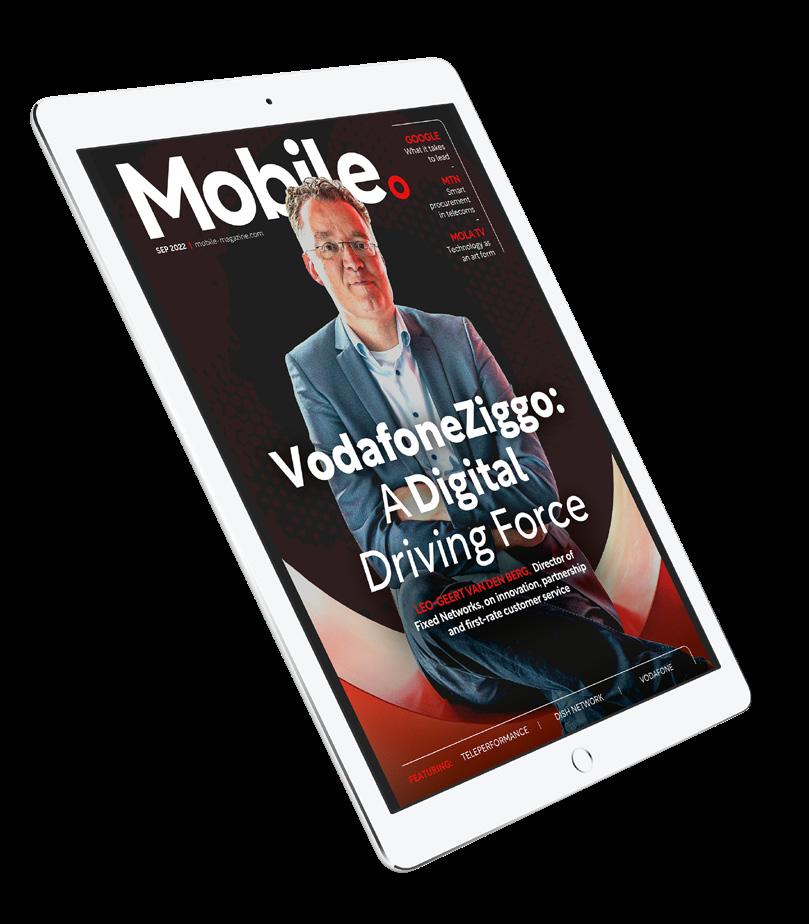
More than a third of young people, across 30 countries, experience cyberbullying. So, what can apps do to support parents' enforcement of online safety at home?
Snapchat recently launched its new in-app security feature, called “Family Centre”, which has now been rolled out in the UAE.
This tool provides parents with more insight into the users that their children are ‘friends’ with, and who they are communicating with, on Snapchat. But, this is achieved while still respecting the privacy of children, as the parents won’t be able to view the content of the messages themselves.
Furthermore, if parents detect any suspicious accounts, they can easily, confidentially and directly report them to Snapchat Family Centre’s dedicated Trust and Safety team.
In this announcement, the latest step in a long-standing debate about mobile security for children, I found it particularly interesting to see how Snapchat has taken responsibility for the risks of its app.
As mobile technology rapidly advances in its complexity - particularly as we look toward the dawn of the metaverse - it is evident that many parents are struggling to keep up. So, tools like these will be essential in helping parents stay ahead of the game.



JOSEPHINE WALBANK josephine.walbank@bizclikmedia.com
“Rather than social media apps hosting online safety threats, through intuitive tools for parents, there is actually scope for them to help aid the issue’s resolution”

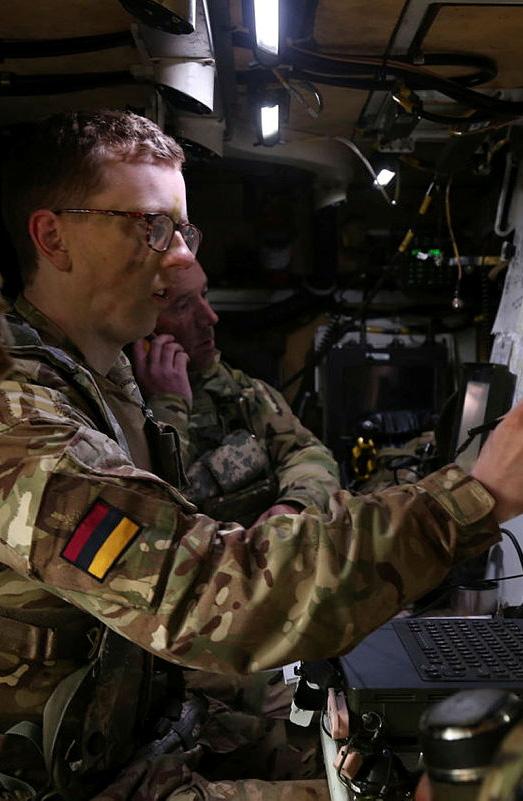


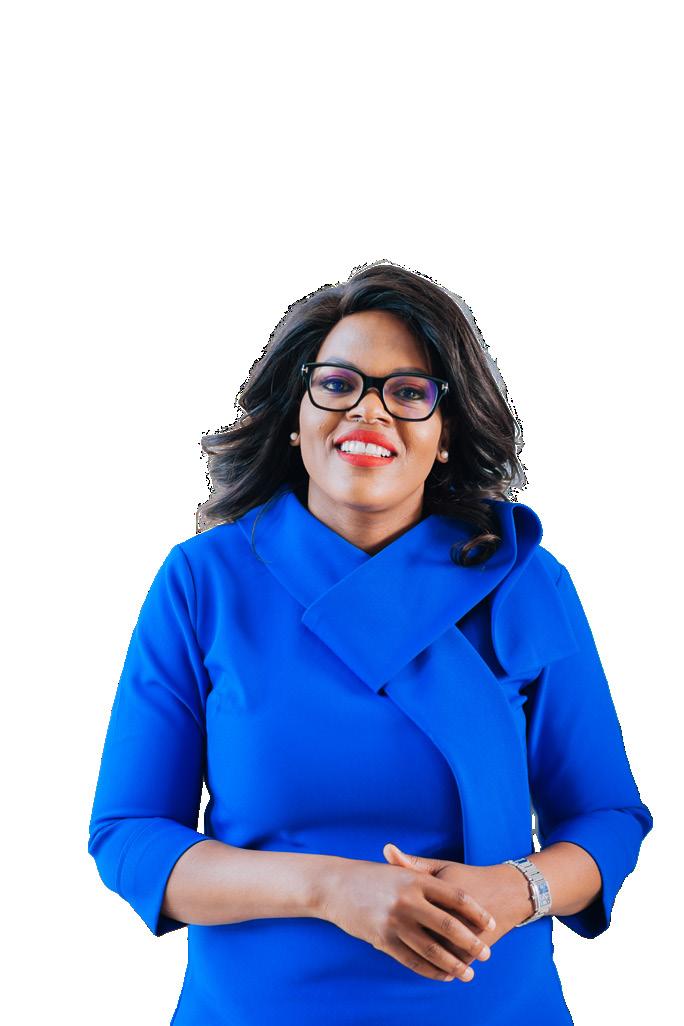
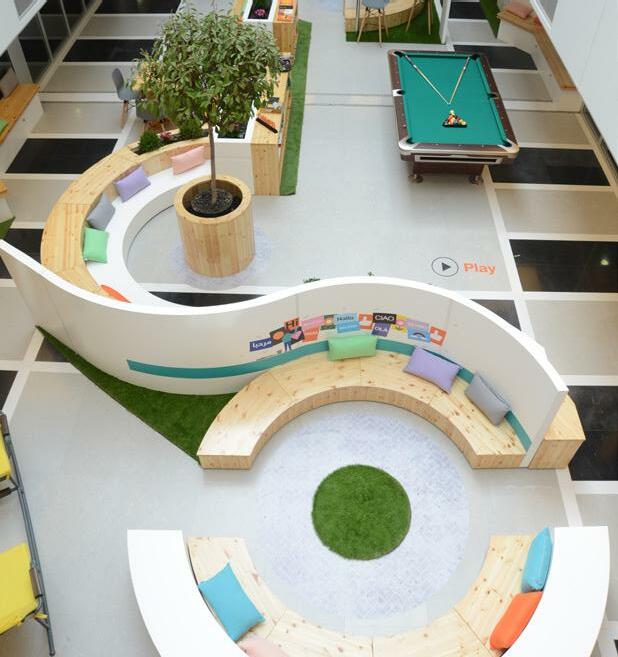







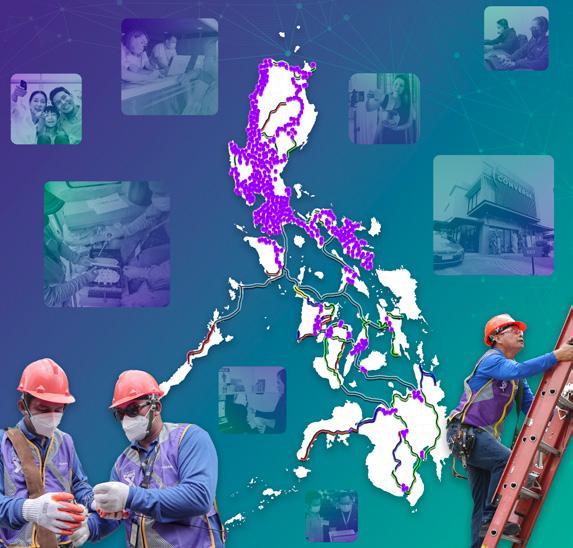



Executives from Appian, AWS, and Xebia share their collaborative efforts and excitement about their partnership in low-code, cloud, and sustainability.
Technology is instrumental to achieving next-level capabilities across industries. But organizations that want to operate sustainably must choose technology that lets them adhere to strong environmental, social, and governance principles.


Appian Corporation, a process automation leader, is a critical piece of the digital transformation and sustainability puzzle. The enterprise-grade Appian Low-Code Platform is built to simplify today’s complex business processes, with process mining, workflow, and automation capabilities.
“By quickly building apps that streamline and automate workflows, organizations are using Appian to make their processes for monitoring and reporting on ESG initiatives faster, simpler, and more effective,” says Meryl Gibbs, Emerging Industries Leader at Appian.
“Both AWS and Appcino are amazing partners of ours,” says Michael Heffner, VP Solutions and Industry Go To Market at Appian. “We have an extremely long legacy engagement with AWS as our trusted, go-to-market partner and Appcino builds “meaningful, business-focused applications on the Appian platform and is amazing in all things ESG.”
As an AWS leader enabling sustainability solutions built on the cloud, Mary Wilson, Global Sustainability Lead at AWS, talks about the partnership with Appian.
“Our objective is to help our customers achieve sustainability goals across their business operations,” says Wilson. “[This means] looking at data availability, meaning access to more data, and enabling actionable insights. “Lowcode, cloud-enabled, technologies will allow organizations to build fast, learn fast, iterate, and continue to improve these insights to drive their sustainability outcomes.”
Tarun Khatri, Co-Founder & Executive Director of Appcino (product part of Xebia), explains just how critical ESG is in the face of digital transformation. “The investment community now considers ESG reporting as a major factor for measuring performance,” says Khatri The collaboration will continually uncover new insights and provides customers the opportunity to accelerate their ESG goals with speed and security.




With the pandemic exposing the need for high-capacity and high-speed internet that wireless broadband can’t meet, we launched an aggressive expansion plan
Dennis Anthony Uy Co Founder and CEO Converge
In a launch event in Beijing, Xiaomi revealed CyberOne - its new extremely advanced AI robot, which experts say is set to rival Tesla’s Teslabot.
The “helpful content update” was designed to improve the quality of the content that is shown in Google’s search results, particularly targeted at reducing click-bait or AI generated content.
T-Mobile has brought 5G connectivity to New York’s legendary Yankee Stadium, allowing visitors to use 5G-enabled devices at speeds of up to 10 times faster.
According to a new 5G cloud gaming report, cloud gaming is expected to reach 99 million North American 5G subscribers over the next decade. This is equivalent to approximately 23% of the 5G subscriptions in the region.
Acer reveals repairable, recyclable and exceptionally sustainable Google Chromebook Vero
Samsung aims for its next gen foldable smartphones - the Galaxy Z Flip 4 and Galaxy Z Fold 4to break into the mainstream market
XIAOMI Xiaomi posted a 20% revenue drop for its yearon-year Q2 sales, citing a decline in the Chinese smartphone market
Controversially, Apple has gone against the WFH trend, enforcing a company return to three day office work week
From the dawn of the first industrial revolution, innovation and technology have been instrumental in meeting global demand.
And, although our technology may have advanced, the global manufacturing industry has never been one to settle or rest on its laurels.
Now, as the world looks towards the so-called fourth industrial revolution, we explore the foundations that have led towards the current rise of smart manufacturing.

Towards the end of the Stuarts’ reign, the first industrial revolution began in Britain, marked by the deployment of new factories and machines powered by water and steam.
Critically, new inventions of the steam engine – the spinning jenny and the telegraph – opened up huge opportunities for manufacturing at a larger scale.

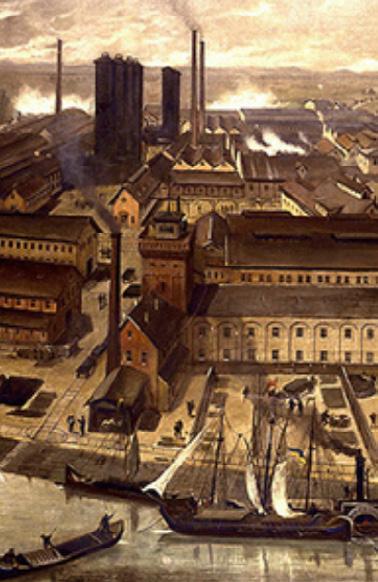
Also known as ‘The Technological Revolution’, the world’s second industrial revolution started in America and was driven by greater technological advancements, fuelling more efficient manufacturing methods
Electrification and massproduction assembly lines were the two most significant developments of this period, and the combustion engine system, in particular, opened up the manufacturing industry to electricity, gas and oil as new energy sources.
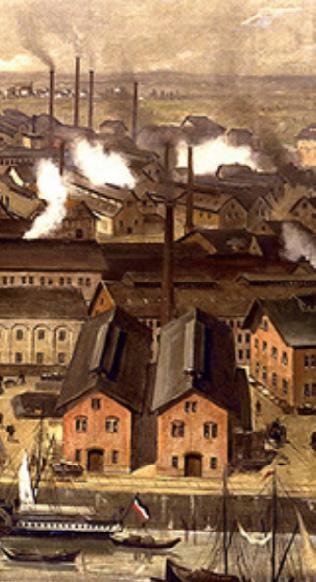
During ‘the digital revolution’, technology and the invention of the internet acted as gateways for a wealth of new, hugely powerful possibilities within manufacturing. The deployment of computers drove the mass adoption of digital manufacturing.
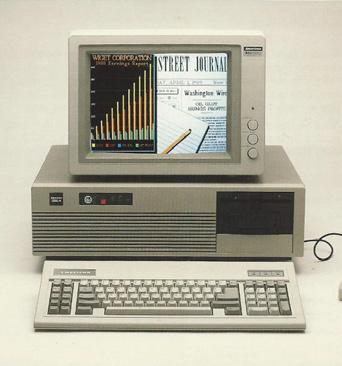

Alongside this, the Universal Declaration of Human Rights (adopted by the United Nations General Assembly in 1948) set new standards for fair wages, safe working conditions, and protection from slavery for all. However, as this was not universally implemented, businesses began to outsource their production to countries that did not follow the legislation.
In 2016, Professor Klaus Schwab, the Founder of the World Economic Forum, suggested that we were at the start of a new industrial revolution: Industry 4.0.
New inventions, which are predicted to completely transform the way that the world manufactures, include AI technologies, the deployment of 5G, virtual reality and machine learning.
We are now beginning to see the construction of new smart factories, which use these new technologies to enable capabilities that were previously completely out of reach.
And, as we’re only at the dawn of Industry 4.0, we’re still yet to see just how much the current industrial revolution will achieve.


Cuba has established an exceptional reputation across both the African and global telecoms sectors.
Her outstanding telecoms experience has made her one of Africa’s most influential business leaders, a key driver of the continent’s 5G rollout, and a figurehead for improving diversity, equity and inclusion across the industry.
Cuba has held leadership positions with some of the largest names in telecoms, including the role of Group CEO for the Mvelaphanda Group, the CEO of Vodafone Ghana and, just before joining MTN, the Group Chief Officer for Strategy and Mergers and Acquisitions for Vodacom.
Across her career, Cuba has experienced working in a wide variety of industries, including telecoms, mergers and acquisitions, fastmoving consumer goods (FMCG), and private equity.
Cuba also has a Masters in Commerce from the University of Pretoria and holds the title of being the first
Paving the way for the digital transformation of, and the 5G rollout in, Africa, Yolanda Cuba is instrumental in addressing the global data gap and a role model for the world’s women in tech.
GROUP REGIONAL VICE PRESIDENT SOUTHERN AND EAST AFRICA AT MTN
“MY BIGGEST LESSON AS A LEADER IS THAT IT DOESN’T MATTER HOW GOOD YOU THINK YOU ARE; REAL PROGRESS AND SUCCESS DEPEND ON WORKING IN TEAMS”
person to reach a CEO position by the age of 29 for a JSE-listed company.
Currently, Cuba is the Group Regional Vice President of Southern and Eastern Africa for MTN, a role that she was awarded after being the company’s Group Chief Digital and FinTech Officer for just over a year.
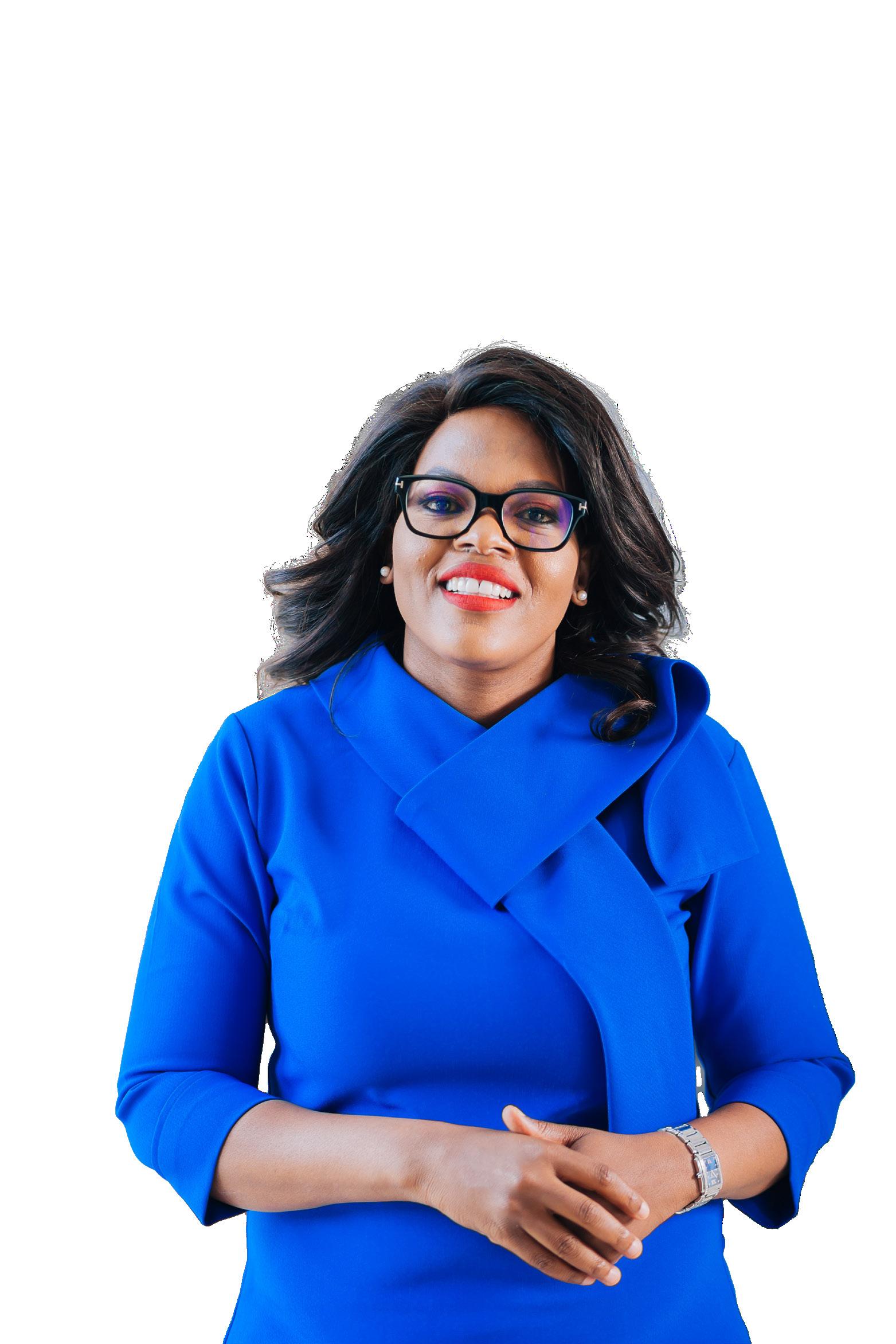
“My role is specifically around driving the digital operator,” explained Cuba, in conversation with The Mail & Guardian’s Power of Women, in which she was an award-winner.
“How we drive MTN to more of a platform business can be seen in us building a mobile money platform that is open to all networks and not limited to MTN customers, as well as building Africa’s super app in Ayoba, which is also an open platform.”
Within this role, Cuba leads MTN’s expansion across Africa and the Middle East. Working across its rapidly expanding regional network, she oversees the deployment of telecommunications solutions, financial services and advanced digital transformation to businesses spanning every size and sector.
“MY JOB, EVERY DAY, IS TO ENSURE THAT PEOPLE ARE CONNECTED TO THE PEOPLE AND THE THINGS THEY LOVE, AND THAT THEY’RE ABLE TO TRANSACT, EDUCATE, ENTERTAIN AND IMPROVE THEIR ECONOMIC POSITION”
“With so many people in Africa still not connected, the telecommunications market still has a lot to do,” Cuba added.
“My job, every day, is to ensure that people are connected to the people and the things they love and that they’re able to transact, educate, entertain and improve their economic position. That job doesn’t stop, but evolves as we get more and more people connected. I’m excited by the prospect of being part of the 4IR journey and being key in driving it for the continent.”
According to recent research undertaken by Cable, six out of the top 10 (and four out of the top five) countries with the highest data costs in the world are located in Sub-Saharan Africa. Their limited infrastructure, coupled with low levels of market competition, means that data costs are kept at a disproportionately high level.
As a result, improving connectivity within Africa is instrumental –particularly as digital transformation becomes critical to the economic development of businesses and the social opportunities of the population.
Outside of her work with MTN, Cuba is highly involved in ESG initiatives, inspiring the next generation of telecommunications leaders.
She is a member of the Nelson Mandela Investment Committee and is the Founder of the Cuba Foundation, Brighter Lives Africa and The Mentorship Boardroom. These initiatives work to offer bursaries and equal educational opportunities to talented young people in South


Africa, giving them the backing that they need to pursue careers in commerce, science and maths.
“My dream is to see every African connected; to have regulations and policies that are progressive; to enable innovation and not hamper it. I want to enable small and medium-size businesses by making it easier for them to connect to their customers and even see them go beyond connectivity through open application programming interfaces, digital marketplaces, easy-toconsume clouds and AI-enabled business tools.”
“Ultimately, we need to increase productivity and the economic outcomes for Africa, improve education outcomes, and reduce unemployment and the underemployment of our youth.”
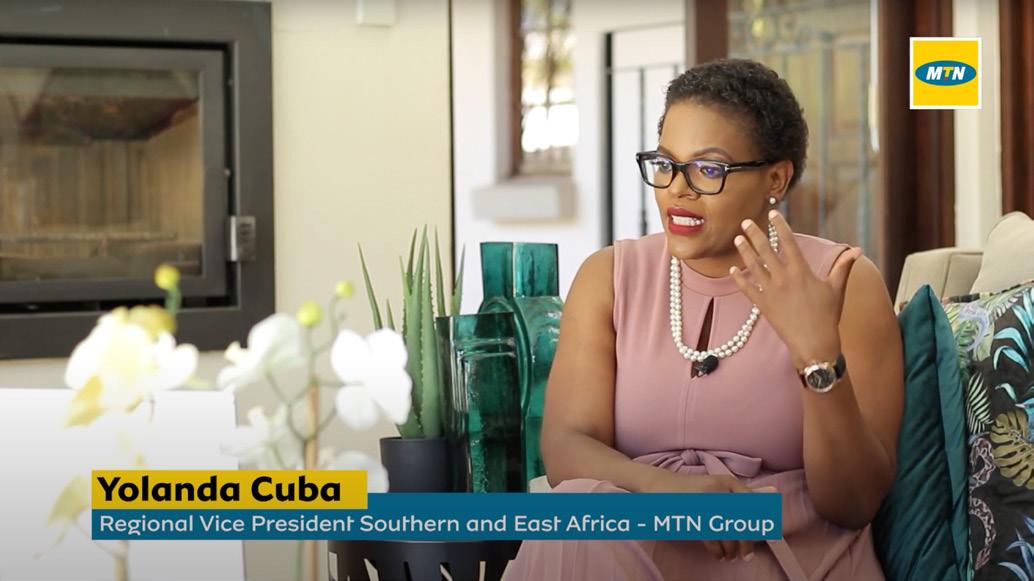
COUNTRIES WITH THE HIGHEST DATA COSTS IN THE WORLD ARE LOCATED IN SUB-SAHARAN AFRICA
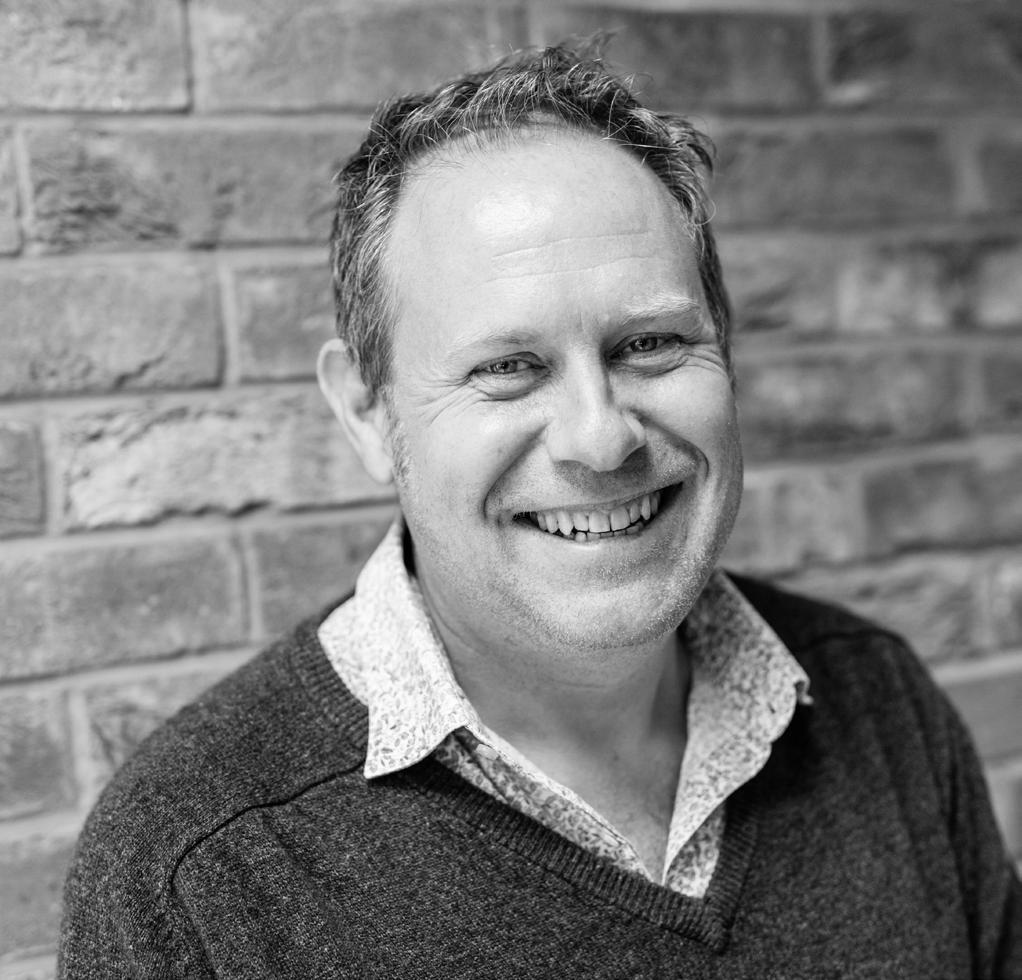
» Technology comes and goes, so the biggest challenge – in a world where clients are often omnichannel and multi-regional – is how to get all the technology they’ve chosen to work together. While almost every other business in the AdTech sector is trying to sell the technology they’ve built, MiQ is different. We’re one of the very few organisations in the ad industry that doesn’t try to sell clients our own proprietary technology, but helps our clients to get the technology they’ve chosen to work at its best.
» With all the major shifts in the advertising industry, one thing that’s a common thread throughout is the use of data. Harnessing data in the right way is one of the technological developments I’m most excited about.
Q . WHAT TECHNOLOGY ARE YOU MOST LOOKING FORWARD TO USING MORE OF?
GILES IVEY IS THE CEO EMEA AT M i Q. ALONGSIDE HIS TEAM, HE SETS THE STRATEGY AND DIRECTION FOR THE REGION, REAFFIRMING MIQ’S REPUTATION IN ITS ESTABLISHED MARKETS, AND PLANNING THE NEXT STEPS – BRINGING THE FUTURE OF PROGRAMMATIC ADVERTISING TO EMEA.
HARNESSING DATA IN THE RIGHT WAY IS ONE OF THE TECHNOLOGICAL DEVELOPMENTS I’M MOST EXCITED ABOUT
A huge part of the future of advertising on streaming platforms – like YouTube and TV – is getting these two, often siloed, channels to work together.
Connecting these disparate data sets can offer vital insights, enabling marketers to determine the goals and tactics of an effective media strategy, while reaching the underexposed audiences within linear TV viewers. I believe that all forms of traditional media will be traded programmatically in as little as five years’ time and, rather than this being a type of advertising, it will just be how all campaigns are run.
Meanwhile, I’m looking forward to seeing how our clients unleash the potential of their data in the postcookie world.
By using the power of first-party data with a cookie-free approach, underpinned by anonymised data sets and clean rooms, advertisers
“BY USING THE POWER OF FIRST - PARTY DATA WITH A COOKIEFREE APPROACH, UNDERPINNED BY ANONYMISED DATA SETS AND CLEAN ROOMS, ADVERTISERS CAN GAIN THAT COMPETITIVE EDGE, STAYING AHEAD OF THE CURVE TO ACHIEVE CONTINUED, SUSTAINABLE SUCCESS”
can gain that competitive edge and stay ahead of the curve to achieve continued, sustainable success.
We’ve seen this kind of success ourselves, with clients choosing to connect their first-party data silos with cookie-less solutions for a future-proofed, omnichannel approach.
» I’ve led MiQ’s EMEA business for four years, and, during this time, it’s been amazing to build my team, watching them flourish and develop.
I’ve also had the privilege of seeing very talented people deliver amazing results in the UK and move to other regions to continue their great work. When I joined, we had less than 100 people in EMEA; by the end of the year, I expect we’ll be almost 200-strong.
» In the short-term, sustainability is something that’s very much on our agenda. We are launching key industry partnerships that give us the ability to measure, report, reduce, and offset carbon emissions across the supply chain, helping our customers make environmentallyconscious decisions about their digital ad spending.
We’re also in the process of making sustainability a key part of MiQ’s DNA, from the inside-out –including how we run our offices and our infrastructure.
Alongside this, we’ve done a lot of work to ensure our clients don’t need to rely on third-party data, both in the run-up to GDPR and in preparation for the depreciation of cookies.
MiQ is focused on using data to help our clients understand their audience’s needs – such as behaviours by region, based on key macro trends like weather, the time of day or week, and so on. This can give us a solid idea of where advertising is going to be most powerful, which is fascinating.
Understanding, and even embracing, the uncertainty of the cookie-less reality can significantly impact a company's data strategy.
The future of identity is already here and, with it, comes a wealth of opportunities.




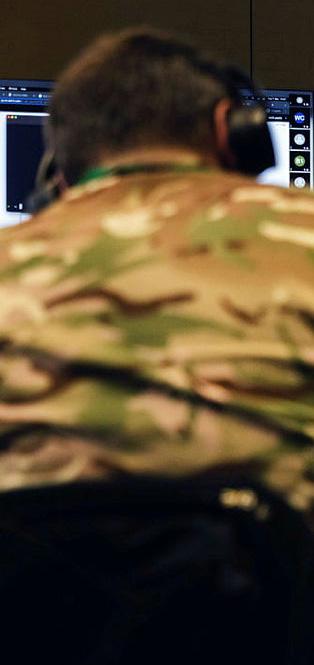


WRITTEN BY:
 Jonathan Cole (CB, OBE), Director, Defence at BT
Jonathan Cole (CB, OBE), Director, Defence at BT

A lot of people aren’t aware that the army runs an external placement scheme for officers and that such schemes can act as bridges between the private sector and the traditionally public world of defence.
The technical knowledge and expertise gained can run in both directions, thereby strengthening both sectors and propelling strategy and development, providing mutual benefits to defence as a whole. Jonathan Cole, CB, OBE and Director of Defence at BT, is one of those bridges and, due to his extensive knowledge and expertise, is an important asset to BT.
“I took part in the placement scheme as a fairly senior officer,” he says, “as I was a Brigadier who was about to be promoted to Major General. For six months, I had the opportunity to come and work for BT.”
At that time, Cole worked in the technology unit of BT rather than where he is now – in its Enterprise business, which is one of the customer-facing units. “I really came here to have a breath of fresh air, to learn about the commercial world and about some of the technologies that are out in the commercial sector that defence was potentially not utilising. In many ways, it was a chance for me to understand another large enterprise with a lot of parallels to the Ministry of Defence (MoD).”
Some find it conceptually challenging to think about defence in terms of the private sector – and even more so when it comes to the relationship between the public and private sectors in this regard – but the parallels between them are striking enough, and the potential reciprocity significant enough, to force them to rethink their longheld biases.
“When I look at BT and the Ministry of Defence (MoD), roughly speaking, they've got a similar sized workforce: both have a global footprint; and both, of course, also have all the advantages and disadvantages of being large organisations,” says Cole.
“For me, it was a really valuable learning experience on how to operate and thrive inside a large organisation. The focus of my secondment was really to prepare me for my next job as the Army Chief Information Officer (CIO), and, at that time, it didn't really occur to me that I would end up working at BT. But actually, as it happened, I had to sign a contract – as did BT – with the understanding that they wouldn't try to recruit me (and that I therefore wouldn't leave the army) within a given time period, in order that the MoD got a return on the investment of letting me go for six months.
Cole joined BT seven months ago, having spent a full military career in the British Army. He was a Major General and had joined the Royal Corps of Signals (the Army's specialists in IT, Cyber and Information). Towards the end of his military career, Cole was the CIO for the Army, working at board level – involved in strategic-level decision making – as well as programme leadership and delivery.
Now at BT and running BT’s Defence team, his expertise in light of the cyclical nature of IT, cyber and information in relation to the ever-integrative public and
private sectors renders him a fine asset for the position.
“I have a team of people in BT who are established to be really customer-facing, focused on the MoD as our customer, but drawing from the wider Enterprise business in order to deliver the products and services to meet our customer needs,” he says. “What I find really exciting is that, having grown up in defence and spent a full career there, I principally, passionately believe in the outputs and the outcomes of the MoD. So, even though I'm in my second career, I now find an opportunity to keep contributing, and our role is really to deliver and operate a whole range of IT services to the MoD.”
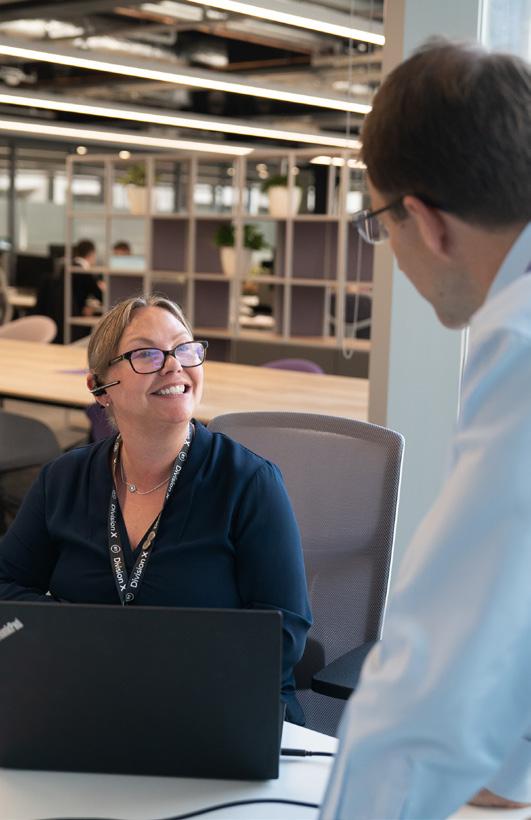
Cole holds personal accountability and responsibility for operational excellence in his role, as well as for the profits and losses of service delivery and future business sales.
Nevertheless, he says: “What I love about my job is that I have end-to-end responsibility, the delivery of which I am
held accountable for across the entire spectrum of live service delivery and operations for customers, as well as for future programmes in-flight, including change management. I also look at the ways in which we can help and partner with defence – (and with others in the defence community) – to deliver the sorts of IT services that the MoD desperately needs.”
Over the last 20 years, BT has predominantly been delivering to the MoD through two main contracts: the Defence Fixed Telecom Service (DFTS) and the Integrated User Service (IUS). Both of these programmes, along with other programmes delivered by other industrypartners, contribute significantly towards what the MoD now calls the ‘Defence Digital Backbone’ (DDB).
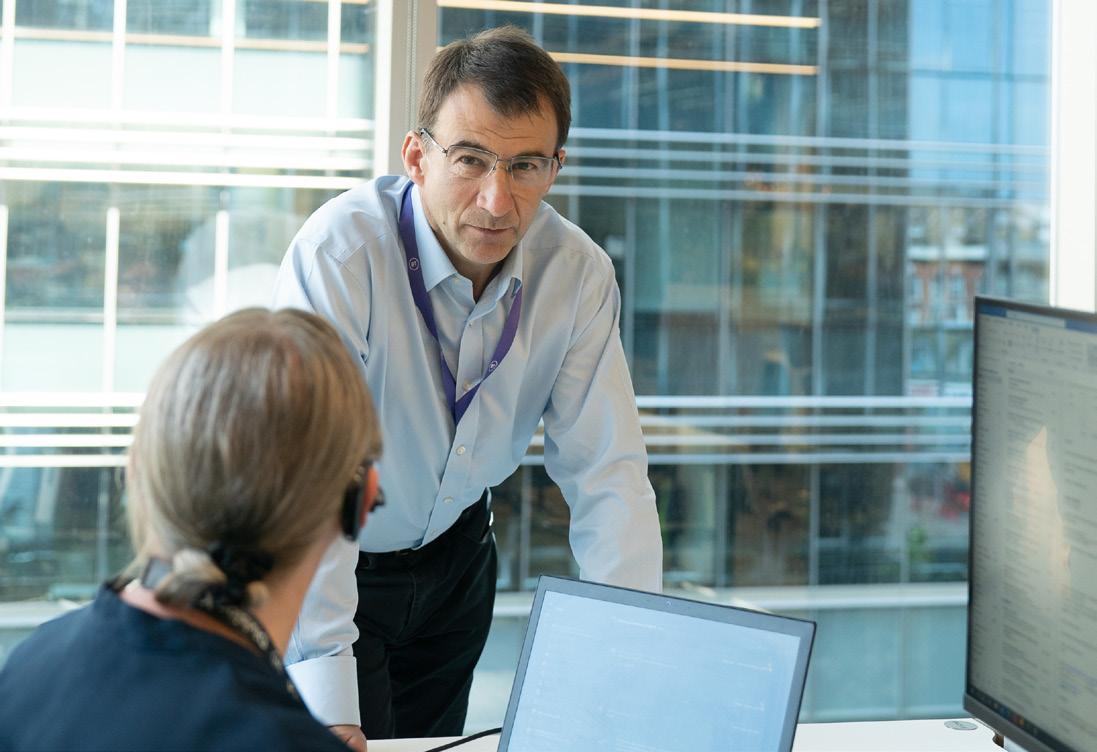
“What I find really exciting is that having grown up in defence and spent a full career there, I principally, passionately believe in the outputs and the outcomes of the MoD”
Jonathan (Jon) Cole is the BT Defence Director, operating as a part of BT Enterprise. He leads the Profit and Loss account, which includes business development, sales, major bids, service operations and contract management. His business unit currently provides services to the Ministry of Defence through Defence Fixed Telecommunications System (DFTS) and Integrated User Services (IUS) and some other contracts that are crucial to Defence’s role.
Jon is excited to be leading his team at a time of great change for defence. He is committed to working with his customers and partners to help deliver a modern, secure digital backbone that users can exploit. BT is a trusted partner with world-leading technology products and services that can assist defence in many ways in pursuit of the national interest.
Prior to joining BT, he completed a 35-year career in the British Army,
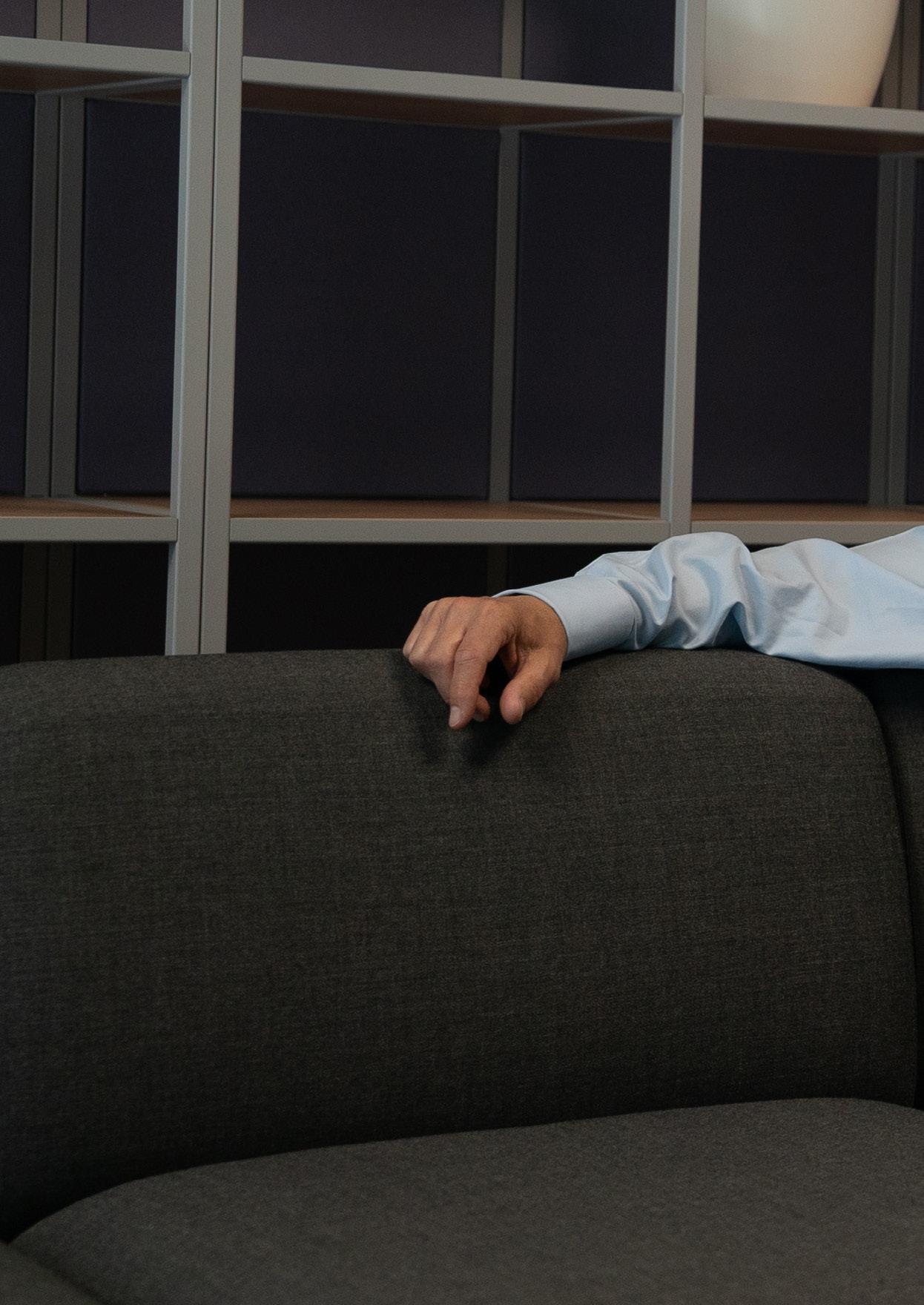
culminating at Major General as the Army’s Director for Information, which included being Chief Information Officer at Board level. He had a wide range of operational, policy and acquisition roles, predominantly in Digital & Information Technology, Intelligence and Security. He holds the honours of CB and OBE for his service.
A Chartered Engineer with the Institute of Engineering and Technology, he has a BEng(Hons) in Electronics, an MSc in Defence Technology, and an MA in International Security and Strategy. He is an active participant in a range of activities including road cycling, hillwalking, running, surfing, paddle boarding and skiing – all of which he enjoys with his wife and his four (now adult) children. He is a member of his local church, and he is also active in support of charity work, predominantly as Colonel Queen’s Gurkha Signals and a board member of the Gurkha Welfare Trust.
“BT has a really strong functional model. What this means for me is that I'm able to pull from the best-of-class people who are doing programmedelivery and excellence”
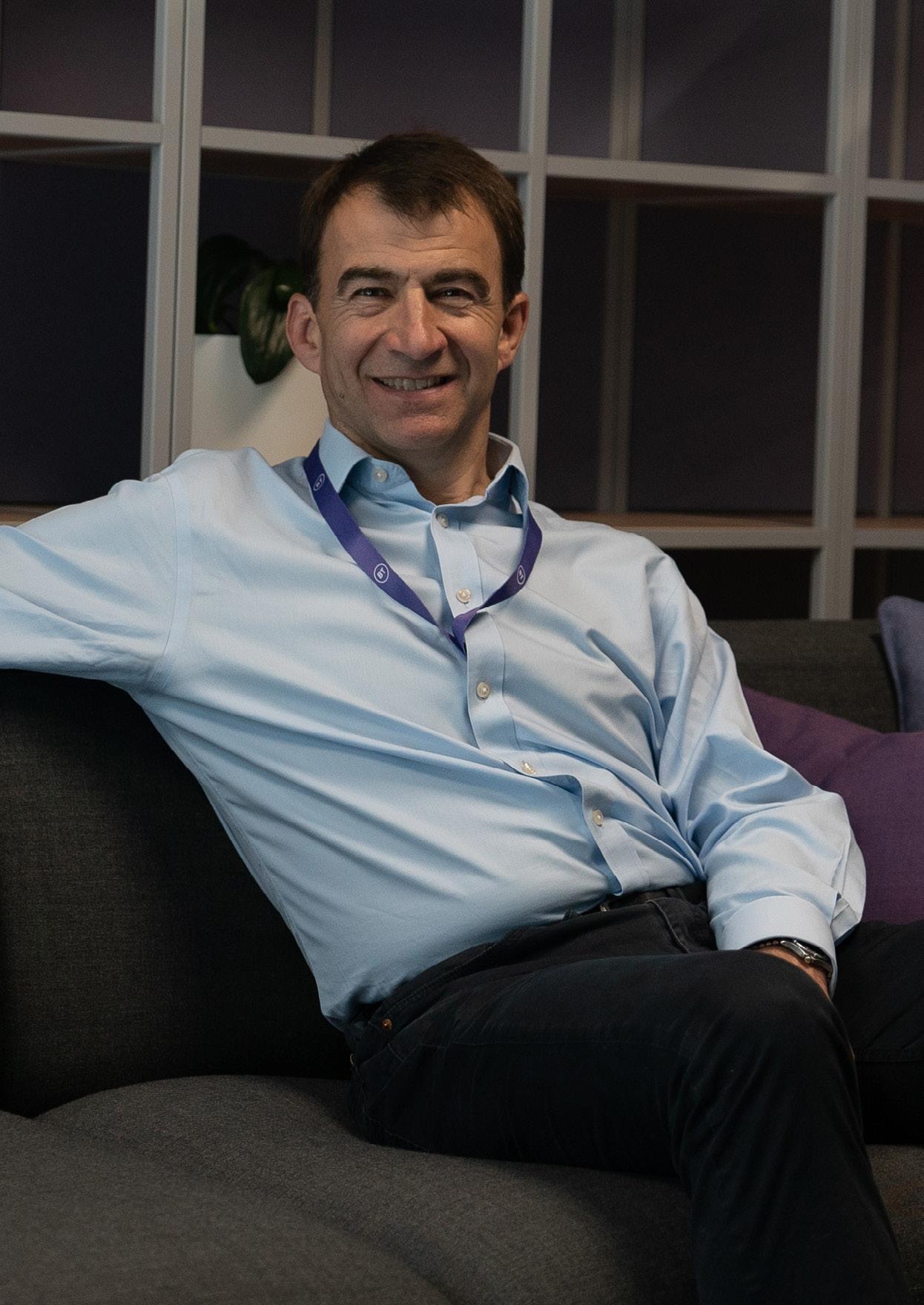

“This,” says Cole, “is really a coalescence of technology, people, data, businessprocesses and operating, and, of course, the use and management of data – and allowing data to be the central aspect of defence's business.”
With the exponential growth of big data and technological development, along with all of its ramifications for security, there is a marked increase in the emphasis on data-centrism in defence industries. This stands to reason.
“The two major programmes that we work on at the moment – the DFTS and the IUS – will eventually come to a natural end, and the MOD will recompete and run for new business”
Cole says: “BT has been part of that journey as it has in many ways, really moved from being a traditionally telecommunications focused company to trying to work further up the stack and understand how we can help our partner to make that journey to datacentricity, and, of course, doing that in the context of significant cybersecurity threats.”
“We are already very much a trusted partner of the MoD, and are one of its major suppliers,” he continues. “The two major programmes that we work on at the moment – the DFTS and the IUS – will eventually come to a natural end, and the MOD will
recompete and run for new business. Naturally, we wish to be in the running for future business and by no means take that for granted. What we seek to do is partner with defence and, where appropriate, the wider network of partners out in the defence industry – as well as the wider commercial environment – to deliver the successor programmes for those in parallel to that.
“BT recently launched a new Charter for its Enterprise customers to provide them with a springboard for growth. This will be delivered through a greater focus on innovation, world-class cybersecurity, a new suite of digital services, customer service improvements and purpose-driven goals. For example, we recently set up the Division X unit within BT’s Enterprise business, which will accelerate the development of customer solutions that integrate emerging technologies such as 5G, IoT, Edge Compute, Cloud and AI.
“I also think that our defence team needs to exploit the opportunities for that. An example might be private 5G networks to enable Internet of Things (IoT) solutions to be deployed and find business opportunities for our customers, which can improve either their productivity, efficiency, operational outcomes or their security. There's all sorts of use-cases to do that, and we want to be part of that journey. We want to move ourselves into an environment where we can exploit the technologies available and help the customer to really move on its own digital transformation.”
As with a lot of organisations, BT’s Enterprise unit has a small business development team working on defence. They also have a sales team that includes account managers and a frontline command-facing customer engagement team.

“So, we have people that run the accounts-facing Army, Navy, Air Force and Strategic Command – the four key pillars of the MoD; we're not just focused on a centralised part of defence, but are working with our customers and helping them across all pillars, from a sales perspective.

“Additionally, we have all of the enabling functions. We're a very functional model in BT. So I depend on Contract Management, Financial, Legal, Project Delivery, Service Operations and Security – a whole, wide ecosystem, all of which is underpinned by technology experts who are, for example, Solutions Architects that work out of our research labs in Adastral Park near Ipswich, where we are able to bring cutting-edge technologies to our customers.
“There’s a really large matrix of people across BT working towards those outputs.”
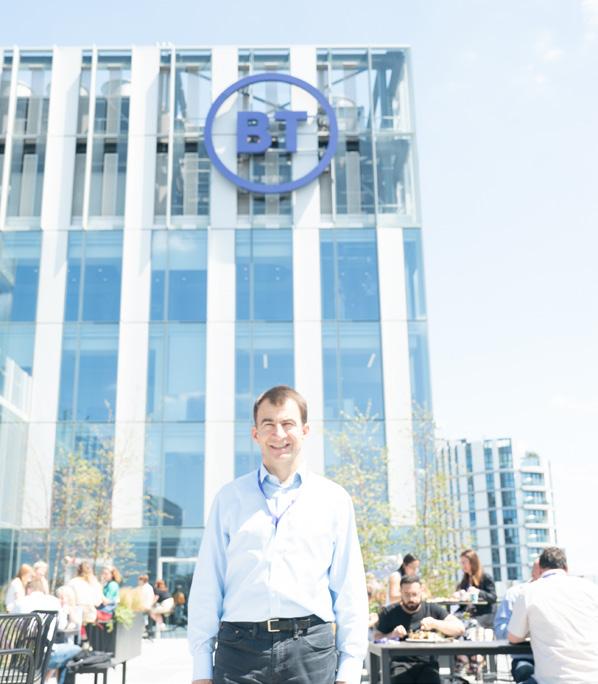
BT’s defence security strategy and how it excels in its approach
Strategically, BT is working very closely with, and gaining an understanding of, the MoD Chief Information Security Officer's strategy, as well as aligning itself with the policies and protocols of the National Cyber Security Centre. This is so that they can ensure that they are firstly, compliant, but also that their customer has confidence in the services and products that they provide: protecting data and making it available for those that need it in order to conduct their operations.
“We work very closely with BT’s security team,” says Cole. “There is a whole operating division inside BT who actually look after security for all sorts of organisations, globally. It's not just defence for whom security is important, so the MoD is, in many ways, mirroring some of the really good practices in other sectors.”
BT’s vertical business unit and its ramifications for defence Cole expresses that, during his time in defence, they had a really 2D model where, in many ways, the single services were more powerful than the individual functions within BT.
“My observation in my last two or three years in the MoD was that it was, however, shifting to an increasingly functional model
– although it still retains a very strong, singleservice organisational approach (Army, Navy, Air Force and Strategic Command).
“By contrast, at BT, I've observed that, while we have our own Chief Executive Officers for each of the customer-facing units – such as inside BT Enterprise (where I work), BT Consumer and BT Global, as well as BT Openreach, which is separate for regulatory reasons – the other customerfacing units, the enabling organisations for digital technology, and the corporate sections have a really strong functional model thread running throughout them.
“What this means for me is that I'm able to pull from a best-of-class team of people who are doing programme-delivery and excellence. Another area would be our Operations Team who are, I believe, a real centre of excellence for best practice, not just across the defence customer but all of our customers. This means that I'm supported by leaders in each of those functions to deliver specialist advice, products and services to my defence customers.”
“The trick is to make sure that I collaborate closely with the Directors of those functions so that we share a collective sense. This means that people are supported by their function, but also that they have a sense of ownership and equity in our outputs and outcomes – and I have the privilege to be able to coordinate those activities.”
“We have people that run the accounts-facing Army, Navy, Air Force and Strategic Command – the four key pillars of the MoD; we're not just focused on a centralised part of defence”
Howard Watson, the Chief Technology Officer for BT, worked very closely together with Cole and his team to drive digital transformation across the company. Now, the company is increasingly looking at how it can go cloudfirst with many products and services, and also explore strategic partnerships in order to deliver cutting-edge technologies.
Another beneficial aspect of the relationship is the research and development labs located at Adastral Park, where they're able to develop patents – many of which have recently been placed around Artificial Intelligence as well as the visualisation around AI focused on Cybersecurity.
“We have people who are worldleading experts, who are invited to speak at conferences around the globe, and to write academic articles around some of these topics,” says Cole.
“Now, of course, a lot of this is protected by intellectual property rights, but as a company, we’re able to take those technologies and put them into our own internal transformation. The most important thing is to find out how we can use that to partner with our various customers along our vertical segments to actually drive those products and services into their businesses and help them deliver their own digital transformation outputs.
“So, in the defence context, what we need to do is to work very closely at a defence level with the MoD’s Chief Information Officer, as well as with the Single Service Chief Information Officers, regarding their individual and collective transformations, to make sure that we’re partnering with them to ensure that they can get the best value for money, the highest productivity and can really be cutting-edge, delivering quicker, faster and cheaper – which I think is what any taxpayer would ask for.”
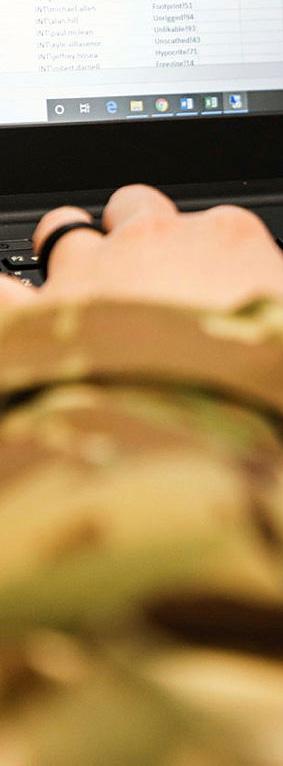
In working closely with BT’s digital unit, we are subsuming experts from inside of BT Digital – as they have digital consultants – who support them in working with customers on usecases and understanding the relevant personas around those use cases.
“Whilst you might be able to reuse and refactor a lot of the products and services across defence, there will be some particular nuances,” Cole says. “We're trying to make sure that we are partnering with our customers in that as well.
BT’s approach is to pull the best expertise from the company, analyse other verticals, and then place them into the hands of the user, get their feedback, and then iterate. Another example of a vertical they’ve taken best-practice from is in health.
Cole says: “One of my colleagues is focusing on helping the NHS to digitise, and I think there's some really good ideas of what they're doing to help provide cutting-edge technology into the NHS. Some of that can be reused within health organisations inside the Ministry of Defence.”

“Whilst you might be able to reuse and refactor a lot of the products and services across defence, there will be some particular nuances”
JONATHAN COLE DIRECTOR, DEFENCE, BT
BT has Enterprise and Solution Architects who work at different layers across their programmes.
“What we need to increasingly do is work closer with the Defence Enterprise Architecture Team, and I think that's growing – but there's still a lot of work to be done in that regard with our customer; we're trying to ensure that we have alignment there,” says Cole. “When our existing programmes are being modified, we need to make sure that's coherent with the principles of a decent architecture around enabling open standards to make sure that there’s reuse of components where possible, that security is built-in by design, and that it's both data-centric and user-centric.”
So, BT has to make sure that they’re providing solutions that will match the architecture in Defence, which requires a real understanding of the whole breadth of the Defence-IT ecosystem, yet can be very large and complex.
BT provides data and networks across all sectors. “If anybody's a fan of premiership sport, they will probably find a lot of the sport that's getting to them is media and broadcast from BT. We take data and insights from that. We look at the network performance, we look at latency, and we have resilience plans so that if, for example, a link drops, there's another link immediately available. What we need to do is to take insight from live operations. We run analytics on that and also have visualisation there, as well as command centres.”
JONATHAN COLE DIRECTOR, DEFENCE, BTBT has a Networks Operating Centre and a network of Security Operations Centres across the globe, providing ‘follow the sun’ security services. They also have subcomponents of these, based on particular customer environments. They then have the callcentres who deal with customer management, as well as on specific tactical issues, but behind the scenes, BT is looking at the data and insights for the performance of their networks.
“But with a strong team of architects and the people in my team with in-depth defence knowledge – many of whom have either served in Defence like I have, or who've worked with the Defence customer for 20-odd years – they of course understand the environment really well. It's all about collaboration and implementation of our experience.”
Cole says: “We look at the security threat landscape and at associated incidents. We work very closely with the National Cybersecurity Centre, sharing incident reports and threat intelligence between our organisations. We also share this information with like-minded partners to help build our collective resilience against the evergrowing volume of cyber threats.”
“What we need to increasingly do is work closer with the Defence Enterprise Architecture Team, and I think that's growing”

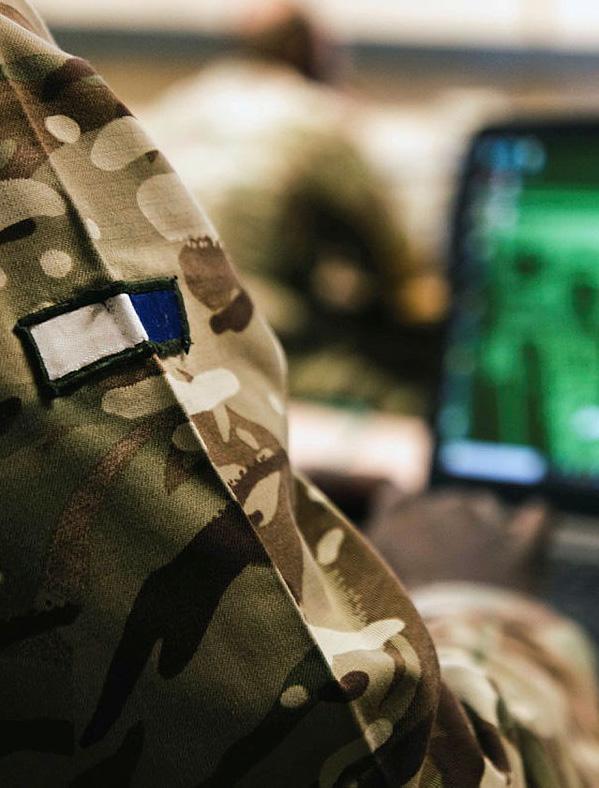
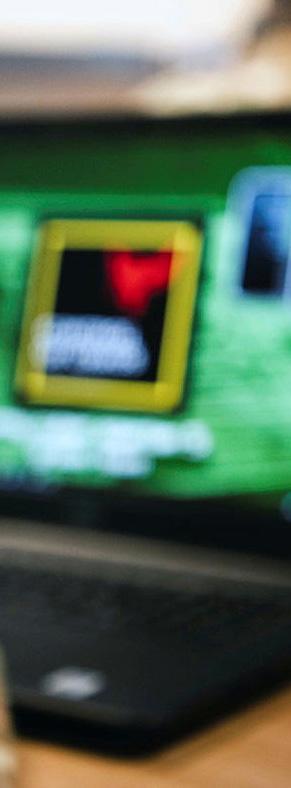
It can’t escape readers that defence is not only bolstered, but actually enhanced, enhanced by collaboration and partnerships. The strength of such relationships is becoming ever more apparent, and the strongest and most effective organisations are those who, in every sector, are willing and open to collaboration.
Cole says: “Over the last two years, there's been a real growth in our smart bases, taking best practice from what BT has done elsewhere.
“A really good example is Belfast Dockyard, where we have enabled them to effectively digitise their operations and achieve amazing returns on their productivity. We have taken some of those technologies and we've worked with individual frontline commands –Army, Navy and Air Force – to also help them digitise in their smart bases. We've depended, of course, on partners to help us to do that. And, given the constraints on the global supply chain during the pandemic, in many ways, one of our greatest challenges
“Over the last two years, there's been a real growth in our smart bases, taking best practice from what BT has done elsewhere”
JONATHAN COLE DIRECTOR, DEFENCE, BT
to the critical path of delivery has been the availability of components.
“Our partner Fortinet has worked really closely with us as we've sought to roll out the smart bases. We have proofs of concept in place now with the Army, Navy and Air Force, and Fortinet has been a really key partner with us in delivering those proofs of concept – where, already, the customer is starting to realise benefits.”
The next 12 to 18 months are really crucial for BT’s Defence team. They have some major contracts coming towards their exit phase. They also have lots of potential new business coming their way, and presently have a major bid in, the outcome of which

“What we are recognising is that defence is changing the way that it's managing its business. It is increasing its use of frameworks, and is, in many ways, disaggregating large contracts”
JONATHAN COLE DIRECTOR, DEFENCE, BT
will become clear over the coming months, as well as other bids that they’ll be looking to work on in the near future.
“We are also working with other partners to support them in some bids that they're leading, and have lots of new business in the pipeline,” says Cole. “What we are recognising is that defence is changing the way that it's managing its business. It is increasing its use of frameworks, and is in many ways, disaggregating large contracts. We need to recognise how we can work into those, either through frameworks or through formal bids. In many ways, we're waiting for our defence customer to clarify what some of those programmes
will look like in the future. I know that I will speak for many of my industry colleagues in anticipation of that. We are potentially waiting on opportunities and are really keen for defence to share with us what those programmes look like, the shape of them, the way that they're disaggregated, when they'll come to market and by which commercial vehicles.
“We are ever-ready to provide world-class products and services with our partners, and put them into that defence network.”





But is it possible to achieve our complete vision for the smart cities of the future using AI technologies to create a net-positive sustainable impact?

The advancement in the fields of AI, the cloud, and IoT has accelerated at a phenomenal pace. And there’s no doubt that, in the short term at least, these technologies are creating additional demands on our sustainability requirements.
Fortunately, though, the additional demand of these technologies is outweighed by the sustainable transformation opportunities that they unlock.
“This is the decisive decade. I am, however, optimistic, and the IPCC have said we already have the tools and the technology we need
“FROM A TELECOMS PERSPECTIVE, IT REALLY IS THAT PERFECT COMBINATION OF IOT’S CONNECTIVITY AND 5G’S RICH CAPACITY CAPABILITIES THAT HAVE ENABLED AUTOMATED SYSTEMS AND FLOWS TO BE BUILT ACROSS CITIES”
AMR HOUSSEIN MANAGING DIRECTOR, MOBILISE
to tackle the climate crisis. We just need to use them,” asserts Adam Elman, the Head of Sustainability for
an intelligent systems-led approach. Not only to the technological solution, but also to the commercial


“Today, we have already proven technology that will get us 80% of the way to net zero. Today's challenge is, in fact, a commercial one; it's one struggling
other,” states Amr Houssein, the Managing Director of eSIM as a Service at Mobilise.
“From a telecoms perspective, it really is that perfect combination of IoT’s connectivity

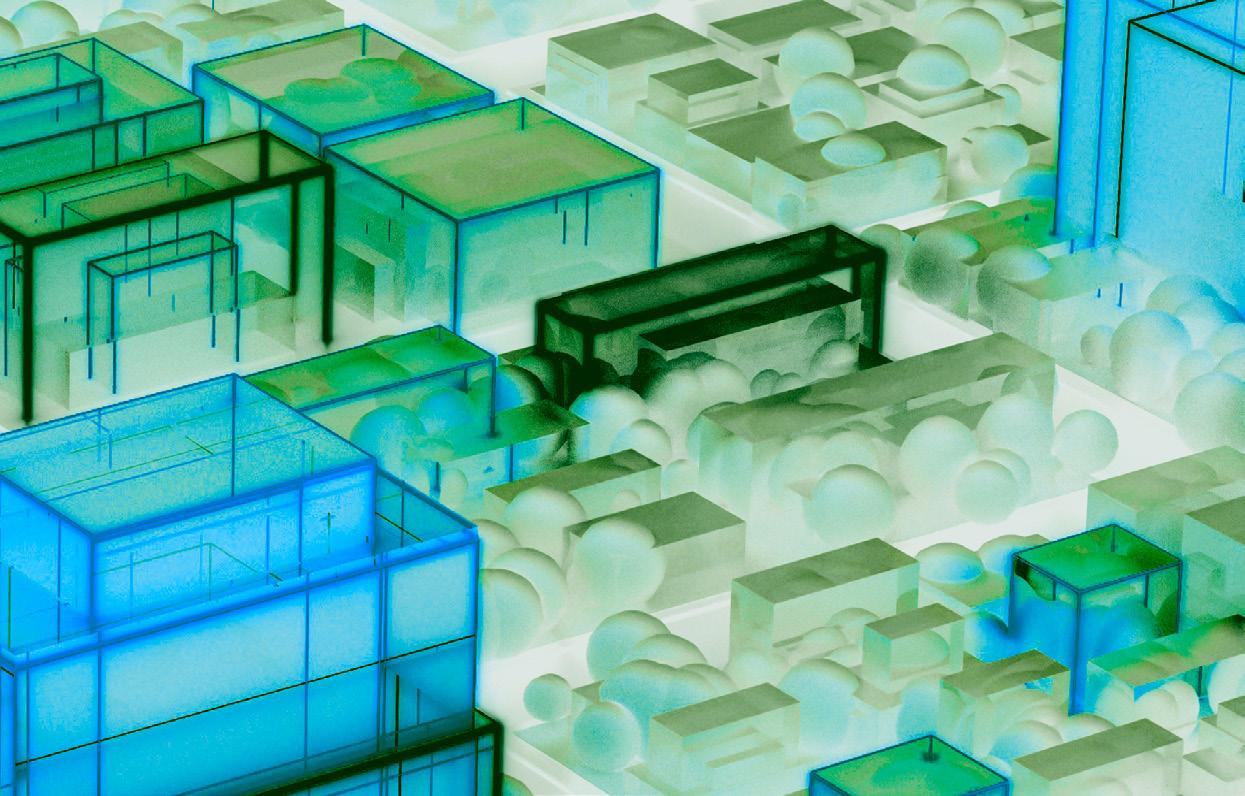
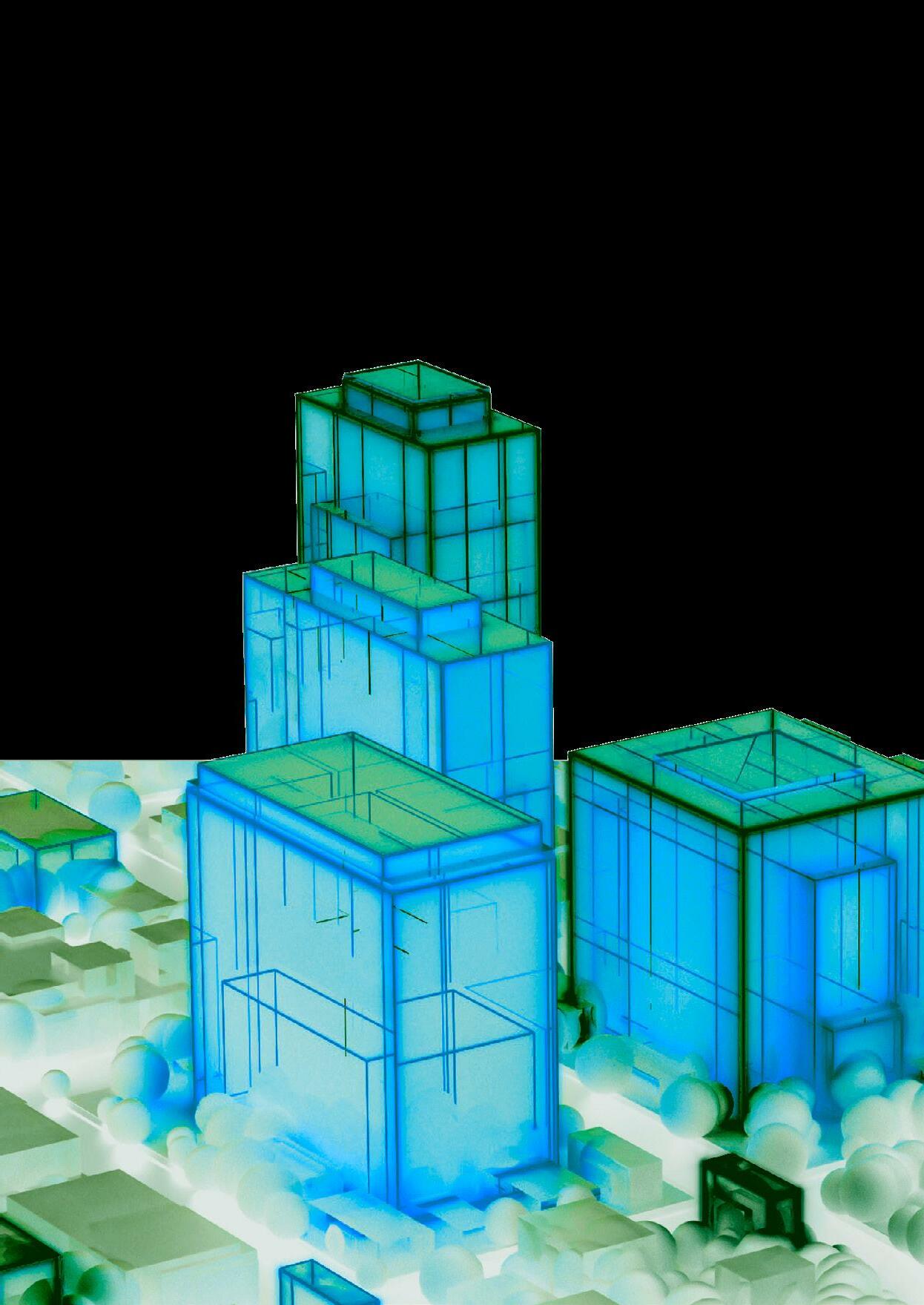
“AS ENGINEERS, WE'VE BEEN TAUGHT THAT WHEN A PROBLEM IS COMPLEX, THE ROUTE TO A SOLUTION IS TO DIVIDE AND CONQUER”
“Our data centres are about twice as efficient as a standard enterprise data centre. And, in fact, compared to five years ago, we produce about five times as much computing power for the same amount of electricity used. AI is a key way we do this,” Elman comments.
“Deep mind is an AI machine-learning specialist organisation within Google. A number of years ago, this started using neural networks to take thousands of data points and figure out optimisations that humans simply can't do, due to the amount of data and the variability within that.”
“And using those data points, passing them through an AI efficiency model, we were able to improve the efficiency of our cooling system by 30%,” Elman states.
For the emissions coming from the data centres, Google uses a carbon intelligence programme to predict how much computing power will be needed on a day-

progress. Environmental Insights Explorer provides data on building emissions, on real-time transport emissions, and on the opportunity to deploy things like solar.”
“One example is Dublin city: it has set a target to increase cycling trips by 20% and used real-time transport data to see what's happening in the city today. That's helped it develop plans for the infrastructure changes and policy changes needed to improve cycling. And it’s using that real-time data to track progress, to see if it's really having the impact that is desired,” Elman adds.
The ongoing development of mobile technologies, facilitated through the use of AI and IoT, demonstrates that connectivity can indeed be done sustainably.
Within smart cities, this will be achieved both at the macro level of governments and global corporations, and the micro of individual users of increasingly sustainable devices.

“Looking into the future, smart homes will become more sophisticated,” Houssein asserts.
“There will be a shift in how we view smart devices – they will no longer just be a ‘nice-to-have’ add-ons, but integrated elements of a home. Rather than a collection of unconnected smart devices, homes in the smart cities of the future will use IoT to become an interconnected ecosystem that seeks to improve efficiency, reduce running costs and make life easier and more comfortable for residents.”
And, thanks to the net-zero commitments and landmark sustainability developments of mobile giants like Google, sustainability will automatically be embedded in the smart city technologies that we will use.
“SOMETIMES, IT'S IN NEED OF A BURNING BUT I WOULD UNPRECEDENTED BUSINESS, FOR PEOPLE,

IT'S A CHALLENGE THAT'S DESPERATELY BURNING PLATFORM TO DRIVE CHANGE, WOULD PROFFER THAT WE ARE IN A TIME OF UNPRECEDENTED CHALLENGE AND CHANGE FOR A PEOPLE, AND FOR SOCIETY AS A WHOLE”
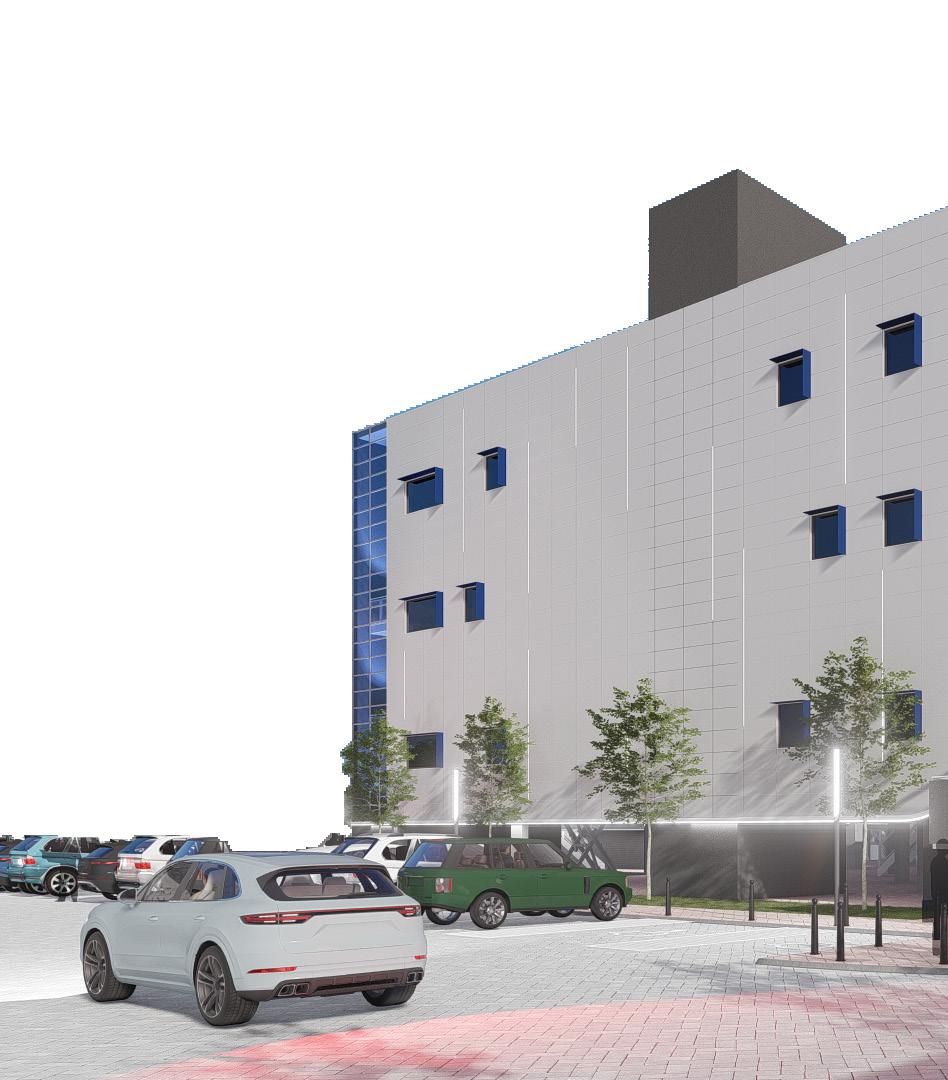
 WRITTEN BY: CATHERINE GRAY
PRODUCED BY: LEWIS VAUGHAN
WRITTEN BY: CATHERINE GRAY
PRODUCED BY: LEWIS VAUGHAN

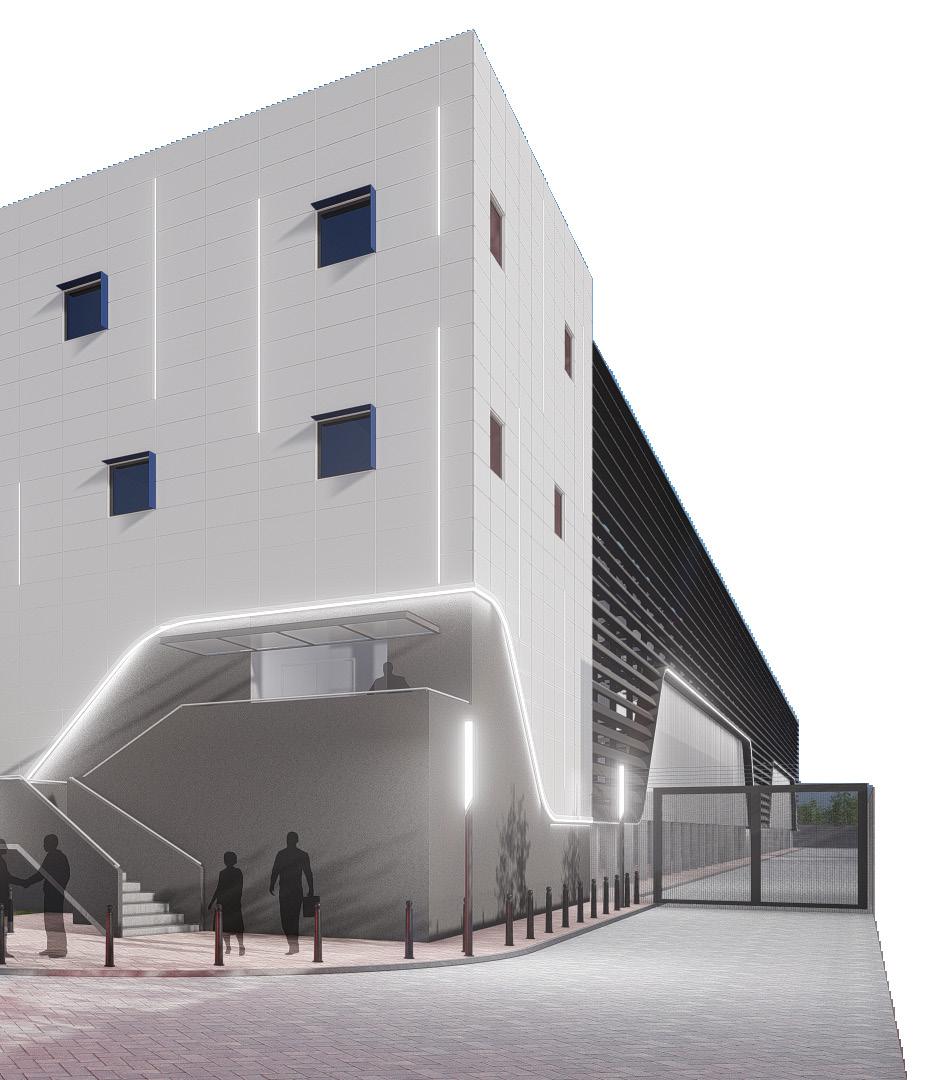
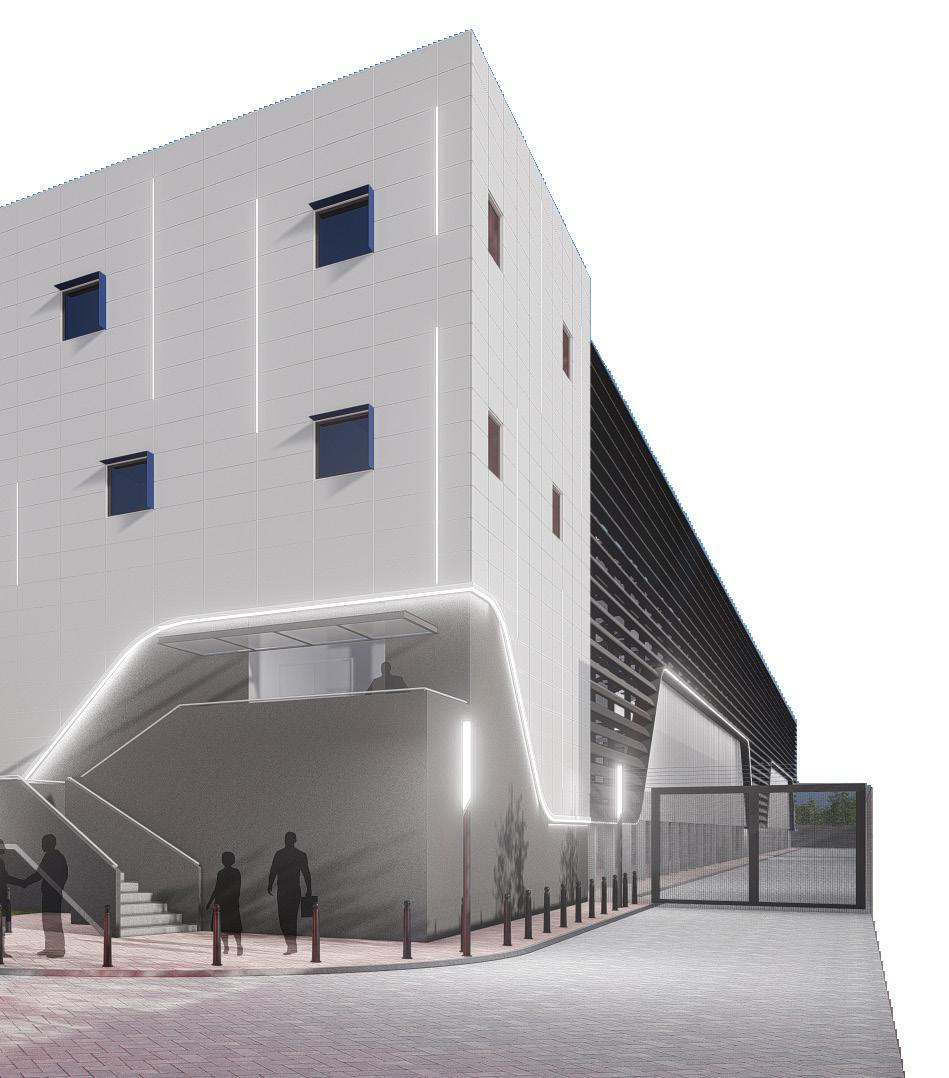
LLate 2021 saw WIOCC - the leading player in the deployment of carrier-scale, futureproofed network infrastructure into Africa - announce US$200mn in funding to launch a new pan-African data centre operator through WIOCC Group company Open Access Data Centres (OADC). Along with this announcement, OADC revealed its plans to invest US$500mn over the next five years in deploying and operating a network of world-class data centres across the continent.
Just over six months later, OADC’s newly appointed CEO, Ayotunde Coker, shares his plans to drive Africa’s digital ecosystem forward: “We want to build at speed, expanding the market and delivering customer-centric value propositions. In Africa, the future is cloud. If you consider the business model for mobile telephony in Africa, its success was ensured by a pay-as-you-go charging model. The cloud is the most effective way to deliver technology solutions to customers – and again, is based on a pay-as-yougrow, pay-as-you-go, pay-as-you-need model.”
“We see significant growth and further opportunity in the hyperscale cloud data centre market. Our new facility in Lagos, for example, is being built in phases to match demand, but can ultimately scale to over 20MW, capable of supporting over 5,000 racks. However, not every location requires facilities of this size. In more regional business hubs, a medium-sized data centre (or ‘midi’), circa 200 to 400-rack facilities, for instance, is more appropriate, and for smaller edge workloads, edge facilities of up to 150kW critical power support services, applications and network extension closer to the network edge; so, uniquely in Africa, we are doing all of this.”

OADC’s newly appointed CEO, Ayotunde Coker, shares his vision for Africa’s future and the role OADC will play in the country’s transformation

Coker was appointed to guide and lead the OADC initiatives that will play a major role in accelerating Africa’s digital transformation, through construction and operation of a pan-African network of Tier-III certified data centre facilities. The organisation is rolling out its unique core-toedge open-access data centre ecosystem, comprising a combination of hyperscale, regional and edge data centres.
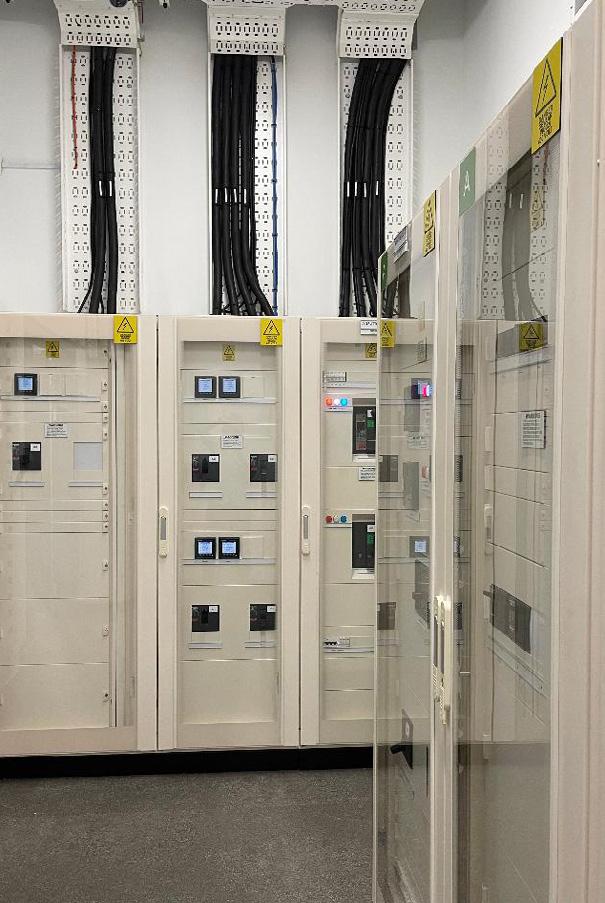
Upon his appointment, Coker said: “I am delighted to be leading OADC in transforming Africa’s digital capabilities, developing vibrant interconnected ecosystems based on deployment of worldclass, open-access digital infrastructure at strategic interconnection points throughout the continent. An opportunity for Africa to leapfrog the world.”
Now, the innovative CEO is firmly engaged in delivering OADC’s plans for Africa’s transformation and is excited by the opportunity presented to him at OADC, as he notes: “The key thing with WIOCC being the leading player in the deployment of carrier-scale, future-proofed open network infrastructure into Africa is that it opens up options for interconnectivity between data centres and right through to the point of use. There is great synergy there. Looking towards the future, WIOCC and OADC have been chosen to land the new >100Tbps Equiano and 2Africa undersea cables at different points in Africa. I think that's a really great achievement, and an excellent anchor point in terms of building out Open Access Data Centres.”
With 35 years of international experience across Europe, the USA, Asia and Africa, Coker knows the importance of giving customers best-in-class services: “Quality is very important in what we do. With many, many years in the industry – particularly in Africa – it has become clear to me that we have to build with quality moving forward. It is so important that the quality is there from the beginning.”
“We will set new standards for excellence in client delivery and service, whilst also setting new standards for the interconnection of digital ecosystems to ensure quality across the continent. In this it is vital to have the support of a great team. I am delighted with the team we have in place, and I will continue to bring in talent in key areas to ensure we are able to deliver on this promise. We will continue to invest in sustainable engineering, sales and marketing, and to move quickly to address new client requirements. We know exactly
Dr Ayotunde Coker is one of the leading players in the development of the data centre industry in Africa and is Chairperson of influential industry group, the Africa Data Centres Association.
Before joining OADC as Chief Executive Officer, Dr Coker led Rack Centre to becoming a household name in Nigeria and a leading brand in Africa, with global recognition and numerous prestigious international awards.
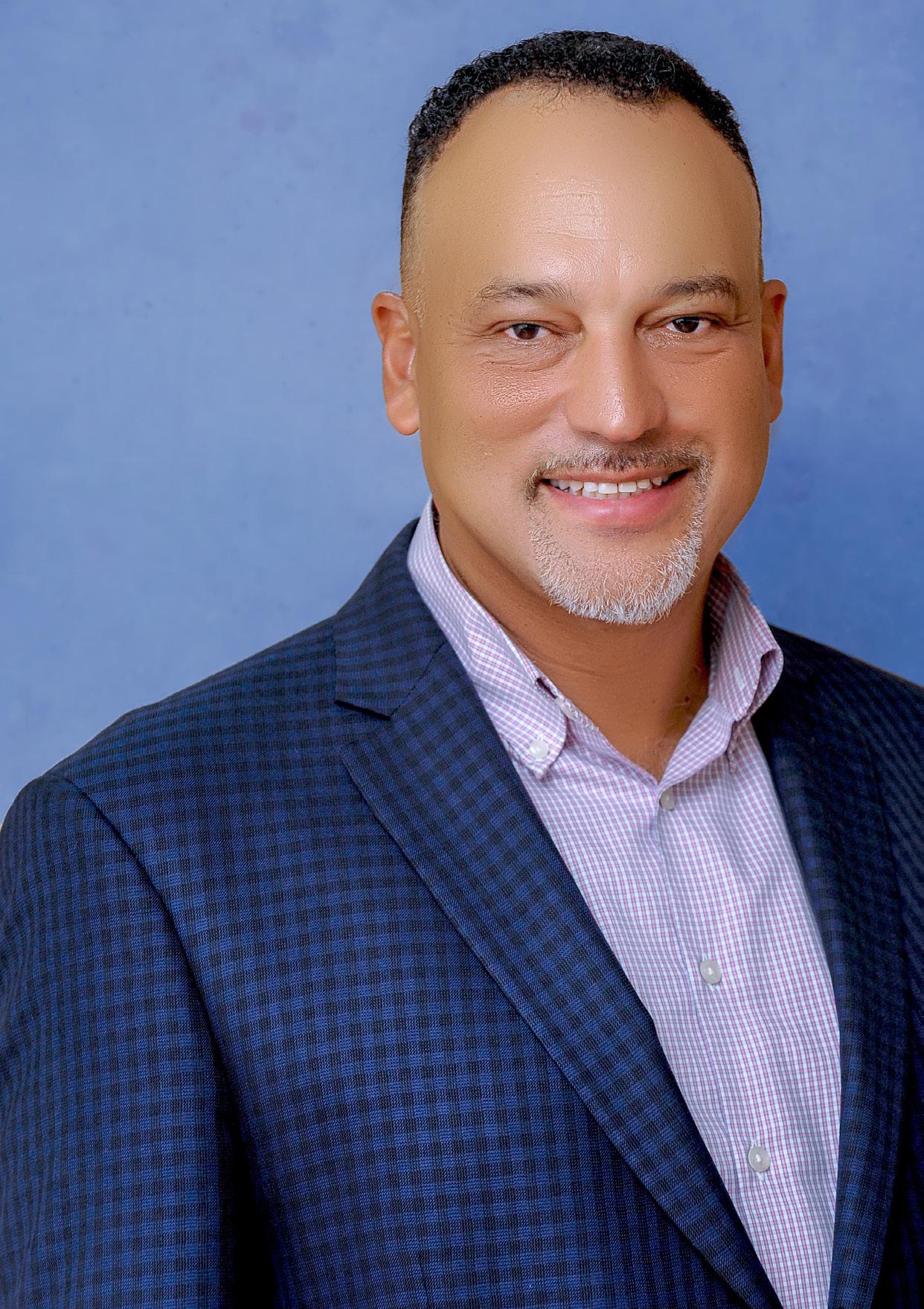
Throughout a distinguished international career as a technology and
business leader, Dr Coker has held senior positions in finance, energy, management consulting and UK Government. He holds an MSc from Cranfield Institute of Technology and a PhD (Honoris Causa) from ESCAE University. His achievements have been recognised by numerous awards, including the Distinguished Manufacturing Alumni Award (Cranfield Institute of Technology) 2020, and in the same year, he was recognised as one of the Global Top 30 Edge Computing Leaders by Data Economy Magazine.
NIGERIA
“It has become clear to me that we have to build things with quality moving forward. It is so important for the quality to be there from the beginning”
DR AYOTUNDE COKER CEO, OPEN ACCESS DATA CENTRES

what we need to do to put the right scale of facility into the right locations. And we can bring it all together for clients in a very flexible way through the unique core-toedge architecture we're putting in place, that includes open interconnection across the continent,” adds Coker.
Technology is crucial to the success of OADC as it looks to transform Africa’s digital ecosystems. Its OADC Durban facility and 23 edge data centres are already operational, with new core sites coming online shortly in Cape Town, Johannesburg and Lagos, Nigeria.

“We're going to see the Internet of Things (IoT) becoming much more important, especially to organisations operating at the edge. Businesses need to have much more creativity in doing things efficiently, and that's where IoT can help. As well as supporting this, we also anticipate implementing artificial intelligence in optimising what we do and how we do it,” says Coker.
OADC has said that it plans facilities in up to 20 countries across Africa, including: Accra, Ghana; Abidjan, Côte d’Ivoire; Cape Town & Johannesburg, South Africa; Kinshasa, DRC; Lagos, Nigeria; and Mombasa & Nairobi, Kenya.
“But, to implement this technology properly, we need to start with the intent, create the context, set the outcomes, and only then we will be able to maximise operational efficiency. Innovation in operating models is a subject at the forefront of my thoughts, especially considering the environment that we're working with. Simply accepting and maintaining the status quo is not always good enough.”
To bolster its technological capabilities and accelerate its journey to a connected Africa, OADC relies on its partners for support. Coker is firmly invested in harnessing enduring partnerships: “As we are building ecosystems
DR AYOTUNDE COKER CEO, OPEN ACCESS DATA CENTRES
“We're going to see the Internet of things (IoT) becoming much more important, especially for those operating at the edge”
right across Africa, we work with a variety of organisations – be they technology partners, interconnect partners, carrier partners and so on. It's going to be a really exciting combining a whole range of partnerships in different parts of the delivery value chain.”

As an example, the company has partnered with Saradan for its expertise across the entire data centre ecosystem: “They bring excellent experience on the engineering front - they've been there, done it before, and they really bring valuable insight into what needs to be done. That 'right first time' quality really has been my experience of working with them.”
Key to successful partnerships is excellence. “Excellence is something we encourage and will continuously strive for within OADC”- and Coker expects this from
 Ayotunde Coker, CEO, OADC
Ayotunde Coker, CEO, OADC
“The quality of client interaction has to be such that every touchpoint is an outstanding experience”
those he partners with, too: “We have the same expectations for them as we do of ourselves. Cultural alignment helps, but a collective ability and desire to learn from each other is also helpful. I also think open graciousness is key; something I really do believe in.”
OADC plans to open its second core data centre in Nigeria later this year. On a four-hectare site in Lekki, Lagos – the largest data centre campus in West Africa - the US$100mn, Tier III-quality facility will have up to 20MW of capacity and 7,200 sqm (77,500 sq ft) of white space, with further expansion potential subject to demand. The Equiano subsea cable lands directly into this data centre.

The culture of excellence Coker is cultivating within OADC is designed to ensure that it delivers a truly innovative and client-centric data centre experience; one that puts its clients at the centre of Africa’s digital transformation.
“The quality of client interaction has to be such that every touchpoint is an outstanding experience, something we work at continuously and embody in our culture. Our client comes first; working with us has to be a totally different experience compared to any other operator, so those are the expectations I put in place here at OADC. We have to underpin the delivery of this expectation through the people we employ, ensuring that every single person in this organisation has the ability and desire to delight each client, and they have to be fully engaged in that process.
 DR AYOTUNDE COKER
DR AYOTUNDE COKER
CEO, OPEN ACCESS DATA CENTRES
“Sustainability also gives us the opportunity to continuously innovate”
Our passion is not for the short-term sale, but for the long-term relationships forged through outstanding client experience” explains Coker.
Coker does, however, recognise that there will always be scope for improvement and that mistakes may be made for OADC to improve in supporting to the best of its ability Africa’s transformation: “It's a constant learning experience. When it doesn't go right the first time, we also have to be good at fixing issues very, very quickly. Sometimes, when things don't go right, the speed and quality of your response can result in an outstanding client experience. It’s important to learn and build a virtuous cycle of that learning. In fact, the next innovation might come out of lessons
learned from what didn't go right the first time. We must also understand that was acceptable yesterday is no longer good enough today. A spirit of learning and striving for relentless continuous improvement is how we will achieve the bar of excellence we are setting for ourselves.”
At the heart of OADC’s ambition is the organisation's sustainability ambitions. With many organisations across the world planning to achieve net-zero emissions by 2050, the data centre industry must increasingly design facilities that conserve energy, are energy efficient and use renewable energy sources.
“There are some things all companies can do to become more sustainable – take online meetings, for example, which can drastically reduce carbon emissions otherwise generated by travel - but that’s not enough by itself; we have to go beyond that.”

“We are recruiting a Head of Environment, Sustainability & Governance (ESG) to be primarily responsible for ESG and the sustainability agenda at OADC,” adds the CEO. “This will give us focus at the senior level, as well as providing us with a focal point for our engineering, innovation and processes in terms of sustainability. We plan to fully embed the resulting principles in our culture to ensure that what we do is inherently sustainable.”
He concludes: “Sustainability also gives us the opportunity to continuously innovate. A lot of what we will do, and the technology we use to implement our sustainability agenda, has yet to be invented or put into full production, particularly in the environment in which we operate. Our key opportunity is to optimise everything we do for the benefit of our clients and the environment in which we operate; it's an exciting time for OADC.”
As our 5G-enabled future draws nearer, we explore the latest network infrastructure advancements and network slicing’s place in evolving key industries
WRITTEN BY: JOSEPHINE WALBANK
A5G is renowned for capabilities that are at once both far-reaching and revolutionary. Not only does it promise a complete transformation of our technologies, but it does so in almost every industry across the globe.
From the perspective of a network service provider, there’s a need to manage this huge variety of user-specific requirements. And it’s network slicing that, experts believe, will offer the neat, flexible solution that’s required.
Network slicing is precisely designed to cater to the wide applications of 5G, which isset to be deployed in critical industries such as manufacturing, agriculture, gaming, entertainment, healthcare, and automotive, to name just a few.
Through network slicing, network providers can create solutions that connect their consumers to specific capabilities and characteristics, catering the network to fulfil their particular requirements.

“This is the first generation of network technology where multiple slices can be created on the same physical network, and it promises to be a“This is the first generation of network technology where multiple slices can be created on the same physical network, and it promises to be a gamechanger”
BLESSING MAKUMBE, VICE PRESIDENT & HEAD OF DIGITAL SERVICES UK & IRELAND, ERICSSON
“This is the first generation of network technology where multiple slices can be created on the same physical network, and it promises to be a gamechanger”
NETWORK SLICING: APPLICATIONS


Complaint-free customers are happy customers. TV Operations Portal and Machine Learning predictive maintenance solutions enable real-time communication with customers devices and allow to discover issues or failures even before they occur and to take preventive actions to avoid them to happen.
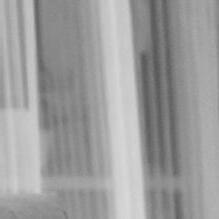

Get in touch with us through info@celfocus.com or Scan the QR Code to learn about Celfocus Digital TV Offer

From a provider’s perspective, network slicing involves offering different customers their own slice, then allowing each customer to manage their own network slice independently. Critically, each network slice is, logically, entirely separate from any other. But, all of these individual allocated slices all sit within one, single physical infrastructure.
“Network slicing is a form of virtual network architecture using the same principles behind software defined networking (SDN) and network functions virtualisation (NFV) in fixed networks,” explained Vishy Ramu, the VP of 5G & Digital Solutions at Tata Communications.
“It allows multiple virtual networks to be created on top of a common shared physical infrastructure, which can then be
customised to meet the specific needs of applications or services.”
As a result, it enables network providers to more effectively fulfil numerous different market verticals, while also increasing their revenue.
“To date, telecommunications networks have been predominantly built around mobile broadband. This means that all users have had to leverage the same end-to-end network for their applications regardless of requirements,” outlined Blessing Makumbe, Ericsson’s VP and Head of Digital Services for the UK and Ireland.
“However, with network slicing functionality, operators can create thousands of virtual, independent networks within the same physical network and purposely build each network to the

“Many of us have probably experienced 5G services on our phones. But, probably, very few have experienced the full potential of 5G ‘done right”
“Many of us have probably experienced 5G services on our phones. But, probably, very few have experienced the full potential of 5G ‘done right”
“Many of us have probably experienced 5G services on our phones. But, probably, very few have experienced the full potential of 5G ‘done right’”
JENNIFER DIDONI HEAD OF CLOUD, EDGE AND MPN, VODAFONE BUSINESS
specific requirements of the end user. This allows support for use-case requirements that have unique demands of the network such as speed, latency, and reliability.”

As the world holds its breath for 5G’s futuristic capabilities, network slicing is the technology that’s set to help make them mainstream.
“These tailored network slices will be a gamechanger for businesses and the public sector, giving them the tools to identify the most innovative 5G use cases of the future,” Makumbe predicted.
It’s the key to the mass deployment and limitless imagination of the next generation of AI-powered applications, remote-assisted surgery, last-mile delivery robots, delivery drones, autonomous vehicles, and even the envisioned smart cities.
JENNIFER DIDONI HEAD OF CLOUD, EDGE AND MPN, VODAFONE BUSINESS“Network slicing helps organisations to react in time and even predictively, as the business starts think for itself” “Network organisations time and as the business think
“Network slicing organisations to react time and even predictively, as the business starts think for itself”
But, why exactly is network slicing so instrumental in harnessing the full benefits of 5G?
“Many of us have probably experienced 5G services on our phones. But probably, very few have experienced the full potential of 5G ‘done right’ – where you bring together dynamic network slicing (only available with a 5G standalone core), 5G radio enhancements, low-latency edge compute services at the edge of the 5G network, and software-defined principles for networking,” explained Jennifer Didoni, the Head of Cloud, Edge and MPN at Vodafone Business.
specific services, devices and/or customers. This is crucial because, up until now, the network speed, latency and quality of service has been ‘best effort’,” added Kai Keinänen, the Chief Product Officer at Qvantel.
These high speeds are required for 5G-enabled machines, robots, and vehicles – and so-called 5G ‘done right’ guarantees both this speed and the required quality of service for these transformational technologies.
An additional advantage of network slicing is the extra security measures that it offers, particularly to slices that handle critical applications.
“Unlike 4G or 5G cellular networks, WiFi is shared with others on the spectrum, and it's therefore not possible to prioritise network access to certain functions and devices, as it is with 5G,” explained Ramu.
So, in the case of a cyberattack, network slicing would be more resilient.
slicing helps react in realpredictively, starts to itself”

“Network slicing enables mobile operators to manage the characteristics of 5G networks. They can control speed, latency and quality of service for the 5G network that is associated with helps realpredictively, to “Network slicing helps organisations to react in realeven predictively, business starts to think for itself”
“Breaches can be contained in one slice and prevented from affecting other parts of the network. If a company is handling sensitive data using slicing, that data can be sent over different parts of the network to safeguard privacy. This capability can be brought in for specific projects and then removed when they're finished,” Ramu added.
As you can see, network slicing opens up major opportunities for mobile operators.
MPN,
“Bandwidthhungry services like online gaming or 4K video streaming can be delivered with a guaranteed network quality of service, high speed and low latency”
“Bandwidthhungry services like online gaming or 4K video streaming can be delivered with a guaranteed network quality of service, high speed and low latency”
“Bandwidthhungry services like online gaming or 4K video streaming can be delivered with a guaranteed network quality of service, high speed and low latency”


A prime example of network slicing in practice can be seen in the entertainment industry.
“As more and more services become digital and are delivered over mobile networks, 5G network slicing enables the mobile operator to manage the delivery of these services. Bandwidth-hungry services like online gaming or 4K video streaming can be delivered with a guaranteed network quality of service, high speed and low latency,” explained Keinänen.
“This places the mobile operator in a strong position in the 5G value chain and makes for a very attractive partner for companies looking to deliver their services over mobile networks. This will mean operators evolving beyond selling telecoms services to instead offering many more services, with a lot more partners and developing new business models.”
Another of the key benefits of network slicing lies in the bespoke, purpose-built nature of the service.
“Network slicing architecture will be crucial in optimising infrastructure utilisation and resource allocation over the coming years,” stressed Makumbe.
“I anticipate that end-to-end network slicing will help unlock the most transformative applications of 5G, accelerating innovation and creating new business models with use cases that we have not yet seen.”
And, according to Makumbe, the innovation in network infrastructure is far from over.
“As more operators roll out mid-band 5G spectrum and 5G standalone architecture over the coming years, we will start to see experimentation with network slicing and advanced 5G use cases being identified.”
“The ability to create flexible networks that can deliver services faster with high security, isolation, and applicable characteristics – supported with advanced AI functionality –will be revolutionary for operators, and they need to seize this opportunity.”
 WRITTEN BY: MARCUS LAW
PRODUCED BY: JAMES BERRY
WRITTEN BY: MARCUS LAW
PRODUCED BY: JAMES BERRY

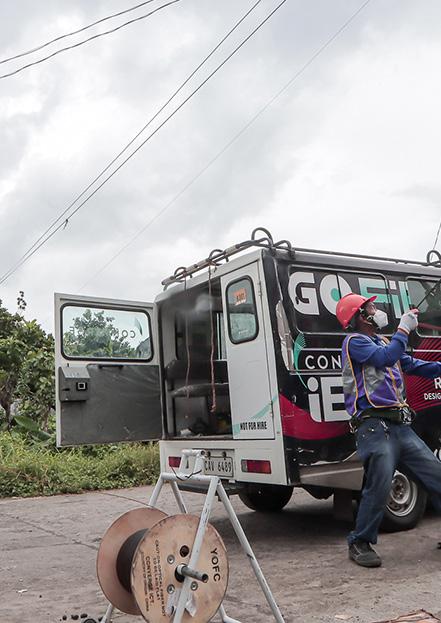
Converge has completed quite the feat. In just a few short years, it has built one of the most extensive fibre networks in the Philippines, providing a world-class digital experience for both residential and enterprise customers.

Founded by Dennis Anthony and Maria Grace Uy in 2007, Converge became the first IT solutions company to run an endto-end pure fibre internet network in the Philippines, with over 560,000km of fibre optic assets nationwide.
In a true David and Goliath story, the business has grown from operating in Pampanga to operating in nearby cities, provinces, and municipalities, to operating nationwide, and in 2020 was part of the second largest ever IPO on the Philippine Stock Exchange.
From working in his uncle’s supermarket – where he first learned about technology – and selling Betamax tapes, Converge Co-Founder and CEO Dennis Anthony Uy is now on a life-long mission to fibre power the Filipino nation.
“I migrated to the Philippines when I was very young,” he explains. “I faced many barriers; I didn’t even know how to speak or write in English or the native language.
“At a young age, I was always tinkering and repairing things like air-conditioners and refrigerators in the supermarket. There, I learned about technology. This continued all the way to my high school days when I would
Since it started rolling out its own fibre optic cable network in 2016, Converge now has one of the most extensive fibre networks in the Philippines.

enrol in vocational courses in computers, refrigeration, and air conditioning services.”
At the same time, he was flexing his entrepreneurial chops selling and renting Betamax videos, while also selling computers.
“When cable arrived in the 1990s, I knew the Betamax era was coming to an end,” Uy says. “I sold my Betamax tapes and got into cable.”
After the Mt. Pinatubo eruption in 1991, he set up the Angeles City Cable Television Network (ACCTN). “People thought I was crazy,” says Uy. “The city and the nearby Clark Air Force Base were blanketed in thick ashfall; major bridges were destroyed, the economy collapsed, and the Americans departed.
“But I saw a business opportunity. At the same time, I felt the need to provide people with news and entertainment to lift their spirits.
“Soon, the Internet came to Pampanga. I got into prepaid and dial-up internet. Then, because I had my cable TV infrastructure
in place, I offered internet access through cable technology.
“At this point, I made the decision to stick to one type of technology, and I knew that fibre would be the best choice. Fibre is not a passing trend in technology. Even back in the 90s, I knew fibre was the future.
“In 2016, we launched Converge. The rest is history.”

Among the different types of broadband, fibre is the best-in-class option, with speed that surpasses copper and mobile technology, Uy says, and fibre-to-the-home lines coming in at 1Gbps.
“With copper technology – whether DSL or coaxial – the upload is a whole lot slower than the download, and not suited for workfrom-home that we’ve been doing a lot these days,” he adds.
“With the pandemic exposing the need for high-capacity and high-speed internet that

wireless broadband can’t meet, we launched an aggressive expansion plan and the pandemic further accelerated the demand for fibre internet.”

As the largest and fastest-growing pure-play, high-speed fixed broadband company in the Philippines, Converge dominates in a market that is severely underserved and presents a blue ocean opportunity, adds Converge Co-Founder Maria Grace Uy, who serves as the company’s President.
“We are the first to run an end-to-end pure fibre internet network in the country, providing Filipinos simple, fast, and reliable connectivity,” she says. “Aside from broadband services, Converge also offers
LOCATION: PHILIPPINES
As the head of one of the country's leading internet providers, Converge CEO and Co-Founder Dennis Anthony Uy's vision remains deeply rooted in serving Filipino people and making connectivity affordable and accessible for everyone.
Starting in the cable business with Angeles City Cable Television Network, Uy, alongside his wife Grace, soon began acquiring other cable TV providers in Pampanga, and evolved ComClark into Converge ICT Solutions Inc, incorporating the company in 2007.
A game-changer and a futurist in his field, Uy has garnered the Master Entrepreneur Award at the 2020 Asia Pacific Enterprise Awards (APEA), and won Entrepreneur of the Year Award at the 11th Asia CEO Awards (ACA) that same year. In 2021, he was again awarded the Master Entrepreneur at the 2021 APEA Regional Edition, and was named among PeopleAsia Magazine’s ‘Men Who Matter’ in June 2021, recognising futureready entrepreneurs, leaders, and artists.

“
FIBRE IS NOT A PASSING TREND IN TECHNOLOGY. EVEN BACK IN THE ‘90 s , I KNEW FIBRE WAS THE FUTURE”
DENNIS ANTHONY UY CEO AND CO-FOUNDER, CONVERGE
an integrated data centre and network solutions services.
“Converge has over 560,000km of fibre optic assets nationwide, which is one of the most extensive and newest fibre networks in the Philippines. With this fibre-powered network, Converge provides absolute premium, world-class digital experiences for both residential and enterprise customers.”

The Philippines has one of the lowest broadband penetration rates and some of the slowest internet speeds in Asia. “This is despite the fact that our population is extremely young with some of the biggest internet users in the world,” Uy states.
“Against this backdrop, we founded Converge with a simple vision in mind:
INDUSTRY: TELECOMMUNICATIONS
LOCATION: PHILIPPINES
Maria Grace Yao Uy is the Co-Founder, President, and Chief Resources Officer of Converge ICT Solutions Inc. Prior to this position, she was the Chief Financial Officer and Executive Vice President of ComClark Network and Technology Corp., and the Angeles City Cable Television Network. After notching the 16th place in the Certified Public Accountant (CPA)

Licensure Board Examination in 1989, Ms. Uy secured a management role at IBM Philippines. Following seven years under her belt at IBM, Ms. Uy served as CFO and VP at Savers Mall in Pampanga.
Already with a foot in the IT industry, Ms. Uy founded ComClark Network and Technology Corp. with her husband, Converge CEO Dennis Anthony Uy. Together, the couple gradually scaled up ComClark from providing cable television requirements to delivering ICT and broadcast solutions. With ComClark having evolved into Converge ICT Solutions Inc. in 2007, Ms. Uy now leads and manages all aspects of financial planning and resource allocation as Chief Resource Officer. As President, Ms. Uy steers the overall strategic direction of the company as it progressively expands its reach into the broadband industry.
provide high-speed broadband at an affordable price point, accessible to everyone and anyone in the country,” she adds.

“We deployed over US$1bn of capital to-date to build one of the most extensive end-to-end fibre networks in the Philippines. Our network currently reaches nearly half of the households in the Philippines and serves nearly two million customers nationwide.”
In a capital-intensive business, Converge’s growth was a story of David and Goliath.
“We had to put in everything we’d built over the years, so we trusted our instincts and reinvested in the business,” Uy adds. “Each year, we slowly continued to grow from operating just in Pampanga to operating in the nearby cities, provinces and municipalities.”
The COVID-19 pandemic showed the importance of fast, reliable internet connection to many people, Uy says. “Everything happened very quickly. There was a surge in demand, so we set up additional customer service units to attend to applications and customer inquiries.
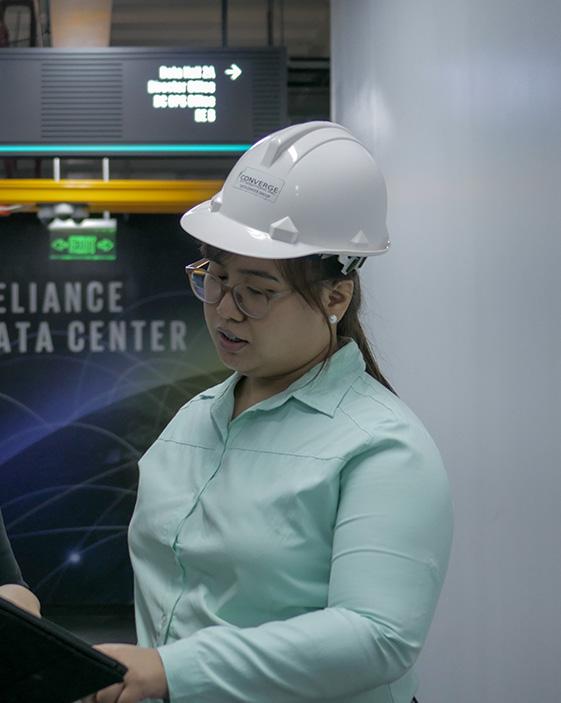
“At that time, we were also planning for an IPO,” she says. “With the tremendous growth of the business amid the pandemic, we wanted to secure our five-year capex plan.
“With the funds raised in the IPO, we were able to roll out our fibre broadband network nationwide very quickly.”
With a goal to reach the unserved and underserved, Converge ensured the network was able to reach the whole country. “We saw the tremendous demand of Filipinos quarantined at home for broadband, so we acted quickly,” explains Uy. “We wanted to connect as many people as possible in the fastest possible time.”
“WE FOUNDED CONVERGE WITH A SIMPLE VISION IN MIND: PROVIDE HIGH - SPEED BROADBAND AT AN AFFORDABLE PRICE POINT, ACCESSIBLE TO EVERYONE AND ANYONE IN THE COUNTRY”
MARIA GRACE UY CHIEF RESOURCE OFFICER, CONVERGE
In 2020, Converge embarked on a nationwide expansion of its network to make broadband available to unserved and underserved communities, completing its nationwide backbone in November 2021.
“The Philippines is an archipelago, so connecting our islands would mean a combination of subsea and terrestrial cables,” explains Jesus Romero, Converge’s Chief Operations Officer.
“The existing infrastructure back then either did not have enough capacity or was uneconomical to use. So we took a more pragmatic approach.
“No one really wants to spend billions to build another submarine cable backbone, but we did what we needed to do,” Romero says.
Access to the national fibre backbone of other players came at a cost that was higher than the acceptable threshold. As
a result, Converge had to take on the capitalintensive fibre roll-out nationwide, helping make broadband more available, and at a cost lower than alternative offerings.

“Our data shows that more than 90% of our subscribers are first-time fixed broadband postpaid users,” adds Romero. “This means that we are making fixed broadband more accessible now to people who did not have access to it before or were using alternative methods to connect to the internet.
“And now, we have completed our National Digital Highway and are present on every major island in the Philippines.”
As the new player on the block, the pressure is high to offer something different, Romero acknowledges.
“We decided early on that the network is the product,” he adds. “And that is our endto-end pure fibre network. We’re the only operator in the country that can claim that.”
“ WE ARE MAKING FIXED BROADBAND MORE ACCESSIBLE NOW TO PEOPLE WHO DID NOT HAVE ACCESS TO IT BEFORE OR WERE USING ALTERNATIVE METHODS TO CONNECT TO THE INTERNET”

LOCATION: PHILIPPINES
Mr. Romero was appointed as Chief Operations Officer of Converge ICT Solutions Inc. in February 2016. He oversees and manages the company’s day-to-day operations, covering revenue generation, customer experience, product development, and organic growth initiatives through partnerships. Prior to joining Converge, Mr. Romero held senior leadership positions spanning all aspects of operation from Globe

Telecom, DTSI Group, ComStream Corporation and Hughes Network systems. He has led market entry, growth and transformation in the areas of Telecommunications, Systems Integration and IT services.
Mr. Romero received a Bachelor's degree in Electronics and Communications Engineering (“B.S.E.E.”) from the De La Salle University in Manila, the Philippines in 1984.
Converge has signed definitive agreements with Singapore-based Keppel Midgard Holdings Pte to participate in the BiFrost Cable System, which runs from Singapore to the United States and will boost its international bandwidth capacity. The business also boosted the international network capacity by an additional 1.3Tbps in the C2C cable system, making its submarine cable configuration fully redundant.
“Converge was the first in the industry to deploy Nx 400Gbps capacity per wavelength over its DWDM network,” says Romero. “The fibre backbone has been upgraded and we were once again the pioneer in using 800Gbps per wavelength technology, making sure transmission of data is fast and has high capacity.”

Partnering with TCS Philippines, Converge embarked on a digital transformation initiative that covered several areas in the organisation from billing, operations, finance.
“We are proud and excited to partner with Converge in their digital transformation journey,” says Shiju Varghese, Country Head, TCS Philippines. “We share their commitment to excellence and sustainability, and we are confident our deep domain knowledge, expertise in digital technologies, and portfolio of solutions in innovation and intellectual property will help Converge to transform their businesses and translate their aspirations into reality.

“This is what we do at TCS – help organisations realise their beliefs and make an impact in their communities.”
“When we started, fibre didn’t exist on the scale that it does now,” adds Romero. “We were the first to offer unlimited bandwidth – no data caps – through fibre. After this, the industry followed suit.”
Along with removing the data caps and offering users symmetric speeds, Converge was in no short supply of innovation: offering Time of Day fibre broadband plans, allowing customers doubled speeds at the
 JESUS ROMERO COO, CONVERGE
JESUS ROMERO COO, CONVERGE
time of the day they need it most. This, Romero says, remains unmatched in the industry.
“Because we have the best network, we can then offer the best products to our customers,” he explains. “Recently, we launched our Gamechanger packages, which are specifically designed for gamers and gaming enthusiasts.
“These aim to deliver high bandwidth, high prioritisation with low packet loss, low jitter, and low latency.” The plans also come with free high-end gaming routers thanks to a partnership with ASUS Republic of Gamers, which began in 2018.
Converge is also continuing to innovate to address the evolving needs of enterprise customers. It launched flexiBIZ last year for the SME Segment and, under Converge Workplace, partnered with SweldoMo to develop an automated HR and payroll system, while also launching HOMEBASE, targeting the Small office, Home office (SoHo) segment.
“ WE WERE THE FIRST TO OFFER UNLIMITED BANDWIDTH
NO DATA CAPS
THROUGH FIBRE. AFTER THIS, THE INDUSTRY FOLLOWED SUIT”
LOCATION: PHILIPPINES
Mr. Azada is Chief Strategy Officer of Converge ICT Solutions, Inc. He leads the team in identifying, developing, and executing key strategic initiatives to drive corporate performance.
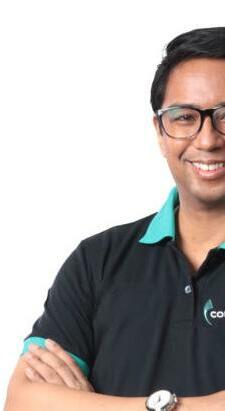
Prior to joining Converge as its Chief Strategy Officer, Mr. Azada was the Consulting Managing Principal and a Management Board member of PwC Philippines, and a Partner of PwC’s South East Asia Consulting Practice.
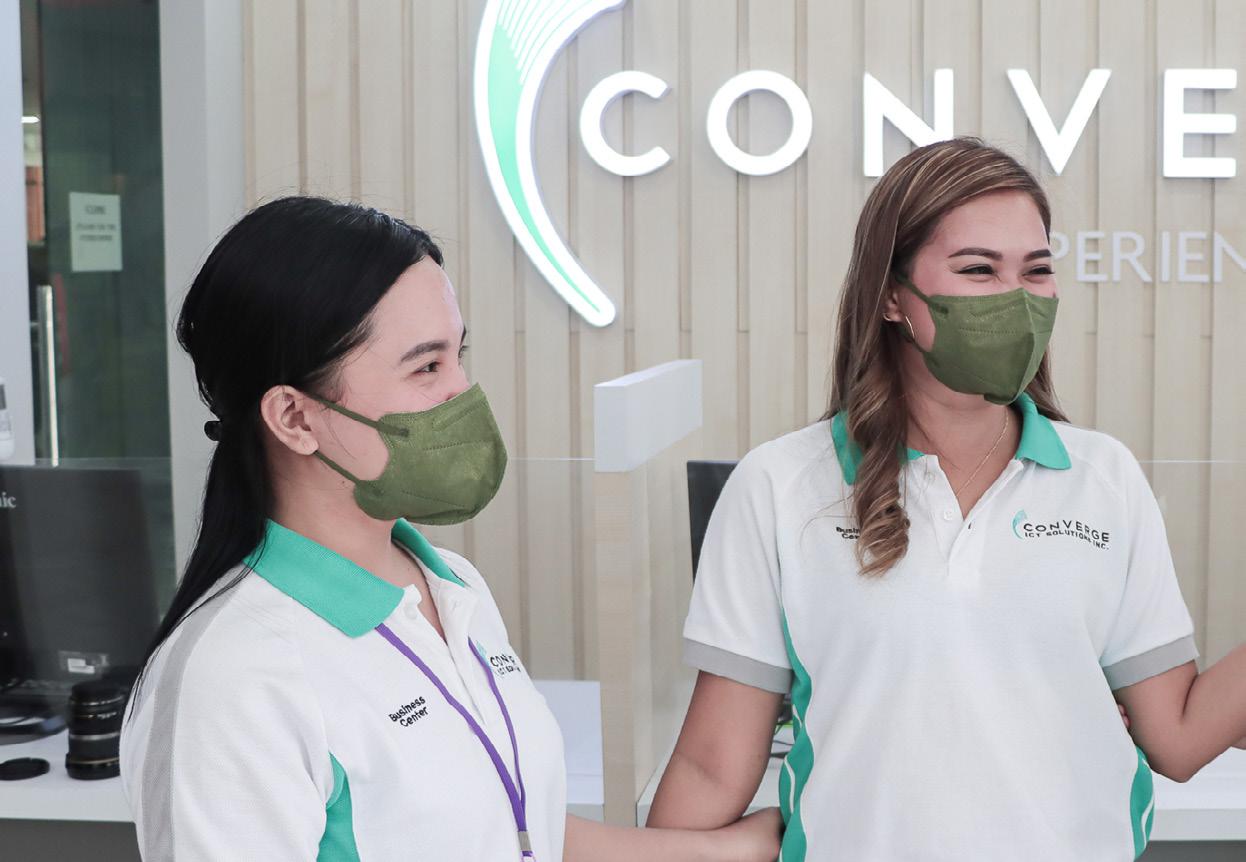
Mr. Azada started in PwC in 1996 as a consultant, undertaking transformation
projects in the telecommunications sector. He was assigned to PwC’s Hong Kong unit from 2001-2014, progressing through the ranks and holding increasingly responsible positions. Mr. Azada led strategy and business transformation projects for clients across Greater China and Southeast Asia, with emphasis in the sectors of information communications and telecommunications.
Mr. Azada holds a Bachelor of Science degree in Industrial Engineering from the University of the Philippines Diliman, and a PgDip in Business Administration (with Merit) from the University of Durham, UK.
The business has declared its own sustainability commitments, highlights Benjamin Azada, Converge’s Chief Strategy Officer, who says minimising environmental impact is also highly “We have decided that we should go above compliance and not only care about our financial performance, but also our environmental and social impact,” he explains.
“As an internet service provider, we have a mission to connect the unserved and underserved areas in the country with the needs of the Filipino people,” Azada adds. “By doing so, we want to ensure that we conduct our business while building trust with
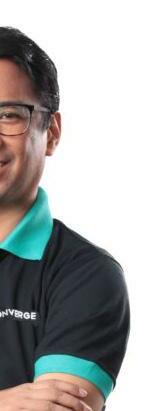

our customers, upholding good governance, caring for our people and pursuing greener operations to minimise our negative environmental impact.
“Our ESG projects are focused on these guiding principles and include improving network resiliency and reliability, applying leading practices on compliance to applicable laws and regulations, fostering a culture of learning and development for our people and continuous execution and exploration of energy and waste management projects.”
This commitment was particularly important in the worst of the COVID-19 pandemic, when having a reliable internet service provider had never been more important.
“As most of our customers transitioned from traditional to hybrid or a work/business from home set up, having a strong digital highway to serve our customers' internet needs is critical,” comments Azada. “Thus, by having world-class economic, environmental, social, and governance commitments and practices, we are making our subscribers proud to be associated with a company that is not just customer-centric, but a business that creates a meaningful impact on the communities we serve and the environment in which we operate.”
NUMBER OF EMPLOYEES, AFFILIATES AND SUBSIDIARIES 2007 YEAR FOUNDED

Global figures currently set the compound annual growth rate of the connected car market at 17.1%, as its 2019 value ($63.03bn) is predicted to increase to $225.16bn by 2027. And it is 5G connectivity that is the driving force behind the sizeable market growth.
The advanced capabilities of the network are enabling manufacturers to better meet global demand, evolve the technological solutions being deployed, and use these vehicles to achieve the eagerly-anticipated supply chain 4.0.
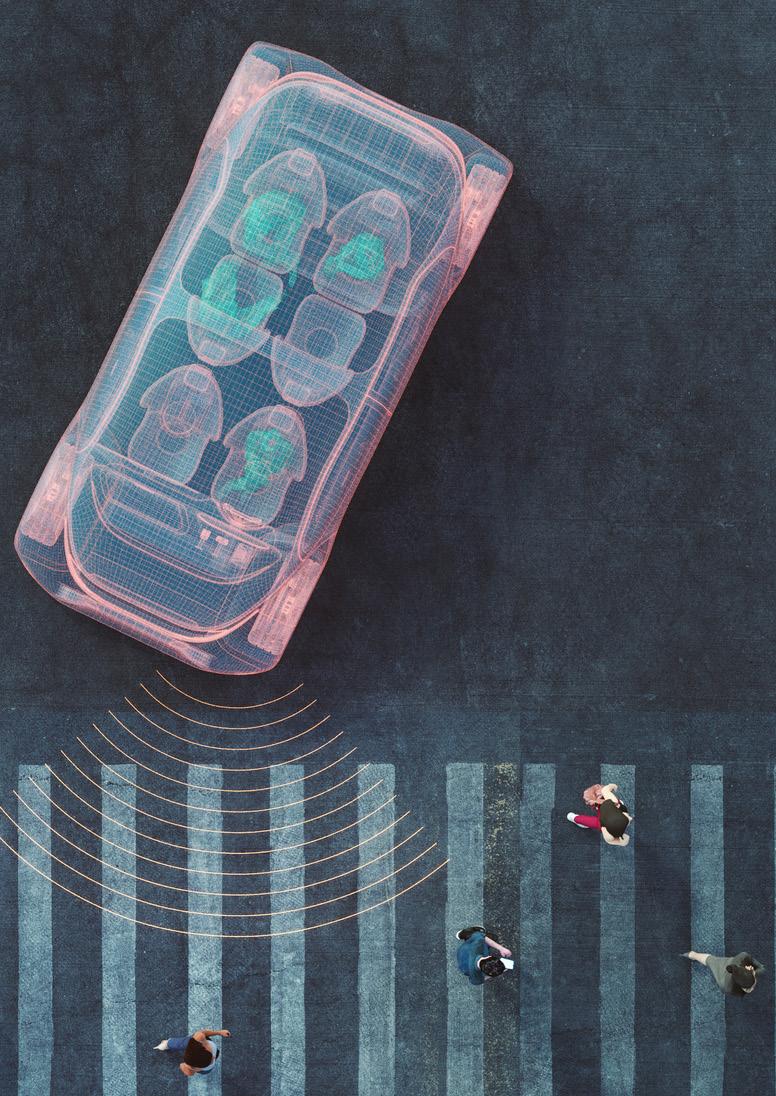

How 5G fuels new smart vehicle capabilities 5G has been a key enabler of advancements in sustainable transport, helping companies across the world to achieve the envisioned ecosystem of all-electric, autonomous vehicles.
“5G can help to accelerate the adoption of autonomous vehicles. It promises transmission speeds up to 20 times faster than current 4G platforms, with significantly lower latency. This means instant access to information and changes to the environment,” explained Eric van Vliet, the Telecom Market Development Director for APJ & EMEA at Dell Technologies.
“This can help intelligent vehicles with quick decisions and the ability to communicate with networks, with each other and with the built environment – on a commercial, widelydeployed basis – taking self-driving cars from a gimmick to a valuable part of economic infrastructure.”
It’s a shift that has been largely driven by the pandemic and the current fuel crisis, both of which have made 5G-enabled features – such as compatible GPS solutions like fuel control, online tracking, and route optimisation – hugely sought-after.

“Deploying next generation internet of things (IoT) technology will help many

“INTELLIGENT VEHICLES MEAN MORE THAN SIMPLY BEING ABLE TO RELAX BEHIND THE WHEEL. IN FACT, 5G’S IMPACT WILL HELP TO TOTALLY REVOLUTIONISE THE SUPPLY CHAIN”
ERIC VAN VLIET TELECOM MARKET DEVELOPMENT DIRECTOR, APJ & EMEA, DELL TECHNOLOGIES
industries improve efficiencies, and in the case of transport and logistics, 5G linked with IoT will cut energy use. Sensors placed in transportation networks and beyond will monitor and analyse their energy needs and consumption in real time and automatically optimise energy use,” explained Aliaksandr Kuushynau, Head of the Wialon platform at Gurtam.
Smart vehicles and the drive towards supply chain 4.0 Fleet managers and supply chain managers across the world are considering making the switch to EVs and smart vehicles. While that requires significant investment, the short-term costs are easily outweighed by the savings and efficiencies enabled over time.
“We tend to think that electric vehicles are more expensive than cars, but that's not true. You have a lot of cheap options on the market,” said Miguel Valldecabres Polop, the Chief Executive of EV Dynamics.
And, as the world’s fuel prices continue to rise, the payoff time for an electric vehicle reduces in parallel.
“Logistics companies’ cost-margins run a fine line between being profitable and making a loss, particularly in the current economic environment, with fuel prices across the USA, increasing by 75% in 2022. Therefore, having the ability to accurately calculate fuel-use before the fact and track potential pain-points – such as where fuel is being used inefficiently – has never been more important,” Kuushynau explained.
“5G technology, when used for route monitoring and optimisation, can greatly help improve fuel economy, beyond mere fuel monitoring. Unlike when 3G tech was widespread, this can now be done in real-


“WHILE IT MIGHT HAVE TAKEN A SIGNIFICANT TECHNOLOGICAL SHIFT, WITH 3G SHUTTING DOWN TO CATALYSE THIS INFRASTRUCTURE INVESTMENT, THE LOGISTICS INDUSTRY CAN BE SEEN AS A BEACON OF LIGHT IN LEADING THE CHARGE FOR 5G ADOPTION IN VEHICLES OF THE FUTURE” ALIAKSANDR KUUSHYNAU HEAD OF THE WIALON PLATFORM, GURTAM
time, reviewing where even incremental route changes can yield savings, reducing both the time it takes a truck to arrive at a destination, as well as the vehicle's overall mileage.”

Meanwhile, more and more costeffective solutions are being introduced to the market, driven by leaders like BYD.
“And, you’ve got very cheap and reliable solutions like BYD, which is now the largest company in China. So, if we get those vehicles – which we will if China stops swallowing all the production – then, then you'll see very cheap solutions globally,” Polop added.
In fact, for industry leaders like Polop, the cost of the vehicles is a far smaller concern than the actual availability of smart vehicles.
“Normally when I look at business plans, the vehicle pays itself just with the money you save on petrol. The big challenge here is whether the OEMs are gonna be able to supply products to you. If you try to buy a Tesla, I'll bet you won't get it in less than six months,” Polop added.
“The big problem is not how fast the companies can adopt, because I think companies will go electric. Especially with the better prices today.”

“NORMALLY WHEN I LOOK AT BUSINESS PLANS, THE VEHICLE PAYS ITSELF JUST WITH THE MONEY YOU SAVE ON PETROL. THE BIG CHALLENGE HERE IS WHETHER THE OEMS ARE GOING TO BE ABLE TO SUPPLY PRODUCTS TO YOU”
MIGUEL VALLDECABRES POLOP CEO, EV DYNAMICS
While smart vehicles will unlock fantastic benefits across numerous industries, it is within global supply chains that we will see the most dramatic transformation.
“Making use of 5G technology in vehicles is not just about fleet owners gaining a competitive advantage by being the first to upgrade. The benefits to consumers, and to the planet – not to mention driver wellbeing – are all equally, if not more, important than having the ability to realise significant cost savings,” said Kuushynau.

“And, while it might have taken a significant technological shift, with 3G shutting down to catalyse this infrastructure investment, the logistics industry can be seen as a beacon of light in leading the charge for 5G adoption in vehicles of the future.”
As a mission-critical industry, logistics and supply chains rely on GPS, telematics and tracking infrastructure to ensure that their delivery of goods and services is completed as efficiently as possible. And, beyond the cost and fuel savings, this efficiency is even more prized in a postpandemic world.
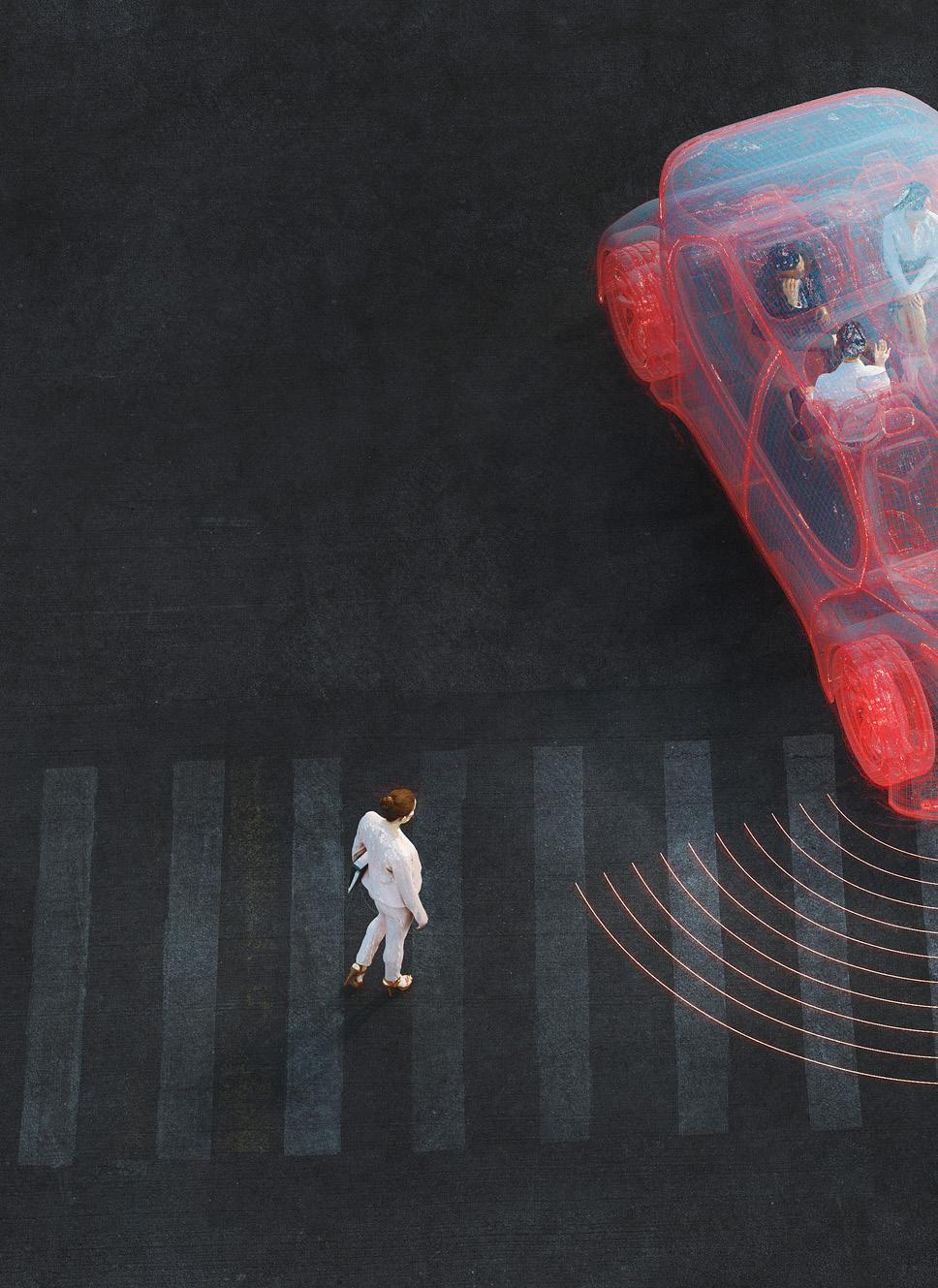
“Businesses, as an after-effect of the pandemic, need ever more reliable live tracking of their fleets and operations so that they can respond in a split second to any emerging issues,” added Kuushynau.
“The use of 5G in commercial vehicles means that, using telematics and IoT platforms, fleet managers will have access to more accurate route optimisation data, helping to alleviate supply chain issues by preventing bottlenecks on certain routes. And, while these are issues that were present pre-pandemic, in recent years they have been greatly accelerated.”
As such, these 5G capabilities will play a pivotal role in making the long-envisioned supply chain 4.0 a reality.
“5G and the use of intelligent vehicles will help make the supply chain 4.0 system possible and affordable – providing the necessary buy-in from stakeholders,” van Vliet explained.
“This is true from a high-level logistic point of view, but even on a granular level, 5G enabled driverless vehicles (such as trucks, forklifts, and trolleys) help reduce the need for labour and drive true 24/7 operations.”
We are still some way off from seeing the full supply chain benefits. Until these systems achieve complete coverage across all road types, the short term will be dominated by specific use cases of intelligent vehicles and 5G.
But, as supply chains pave the way for developments in vehicle autonomy, the world’s 5G providers can take these learnings and apply them to the full breadth of other industries. The revolution of supply chains will quickly drive the same transformations across countless other global sectors.

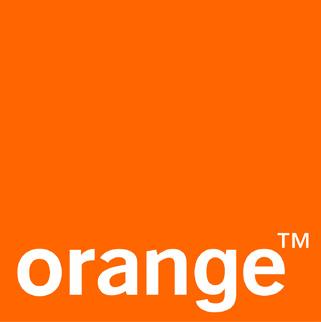 AD FEATURE WRITTEN BY: DOMINIC ELLIS
ORDAN EMBRACES HR TRANSFORMATION PRODUCED BY: STUART IRVING
AD FEATURE WRITTEN BY: DOMINIC ELLIS
ORDAN EMBRACES HR TRANSFORMATION PRODUCED BY: STUART IRVING


Employee engagement has always been of prime importance to Orange Jordan, but now the leading mobile communications’ operator is implementing a new ‘Engage 2025’ strategic vision that will prepare its workforce for the digital and cultural challenges of the post-pandemic era.
Razan Abdeen, Cultural and People Development Director at Orange Jordan, is perfectly placed to handle the HR transformation through her 20-year affiliation to the company, which today has 1,700 employees.

She started in Quality Management in 2005, before heading up to Organisation Development in 2011.
“I found my passion then, which was learning and development,” she said. “I broadened my scope to include performance, talent and skills management, and culture.”
Previously, HR was more tied to operational management, but, following the integration, it’s taken on more strategic vision.
“Getting closer to an international brand like Orange exposed us to international HR approaches and best practices,” she said. “We work hand-in-hand with the business strategic plan, and my role is to ensure our new strategic vision is aligned with the Orange Group strategic vision
She said the plan started at the beginning of 2020, and the roadmap is taking place within five years.
Razan Abdeen explains how Orange Jordan’s new HR strategic vision is built on engagement, wellness and digital skills

“My role is to ensure our new strategic vision is aligned with the Orange Group strategic vision”
RAZAN ABDEEN CULTURE & PEOPLE DEVELOPMENT DIRECTOR, ORANGE JORDAN

As with most companies, the last 24 months have presented unprecedented challenges.
Orange Jordan has seven key values: caring; transparency; excellence; results oriented; customer centric; agility; and collaboration –and, understandably, the first one took priority during COVID.
“We were very cautious at the start of the pandemic,” she recalls. “We introduced workfrom-home in March 2020, as it was important to maintain business continuity. It was the first time we’d experienced anything like it, and it wasn’t easy as certain jobs demand being out in the field – and, of course, we saw internet demand soar during lockdown.”
In one of the most supportive moves, salaries – and even bonuses – were maintained.
“We focused a lot on training to help people be more productive and learn how to supervise teams in the ‘new norm’,” she added.
“People were emotionally impacted, too, so we also introduced a ‘Let’s talk’ & Fadfada chat feature, which proved to be a really useful tool, enabling them to vent their feelings and provide support managing their workloads from home.”
TITLE: CULTURE AND PEOPLE DEVELOPMENT DIRECTOR COMPANY: ORANGE JORDAN INDUSTRY: HR
Professional with more than 20 years of experience in human resources’ different domains; all of my experience is in Orange.
Main experiences and achievements are in learning and development, HR strategic planning, talent management, performance management, competencies assessment, employee experience, employee engagement, corporate culture, HR digital transformation, career management and counselling, functional/Job and efficiency analysis and HR policies and processes development and re-engineering.
My strengths lie in the ability to create and improve the standards and the quality of organisation development functions, processes, practices and achievements proved excellence in planning and achieving business objectives in line with the organisation’s strategic vision.
RAZAN ABDEEN CULTURE & PEOPLE DEVELOPMENT DIRECTOR, ORANGE JORDAN
“We focused a lot on training to help people be more productive and learn how to supervise teams in the ‘new norm’”
Succession planning also became a key issue as staff contracted COVID.
For Orange, It wasn’t just its own teams that it had to manage, but customers’ wellness, too, ensuring connectivity and installations went ahead as normal.
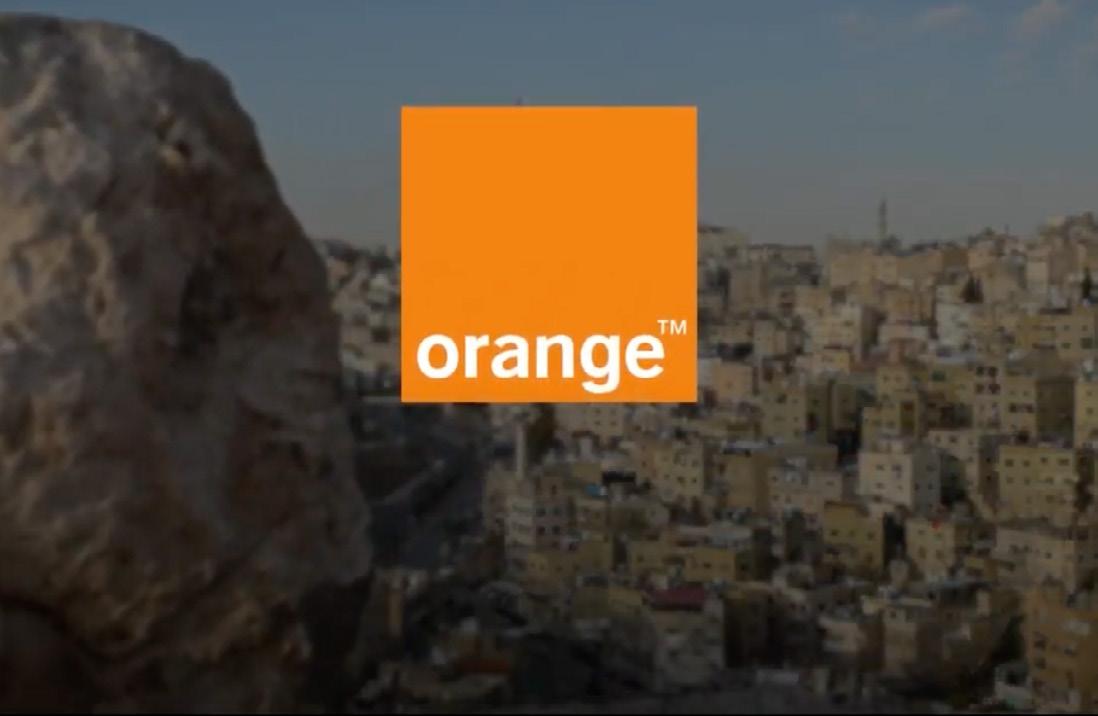


“We’ve seen a shift in focus with mental health, and it’s important for the staff to have platforms to talk about whatever they want to, whether it’s just chit-chat with other employees or raising more important issues,” she said.
Now, as the world gradually returns to normal – masks are
no longer compulsory in Jordan – Orange Jordan is introducing a hybrid approach, allowing staff to work up to two days from home a week, or eight a month.

“We will continue to focus a lot on health, safety and wellness,” she said.
“We encourage staff to talk, undertake exercise and engage in team-building activities.”
Dovetailing with the wellbeing focus are key people development strategies
framed around ‘Future Skills’ training: bolstering learning and development in key areas of AI cyber, big data and the Cloud, while focusing on certification and higher education in future skills. Work on
“Agility is taking on more emphasis, as we want to create agile mindsets and practices that underpin the HR and digital transformation”
RAZAN ABDEEN CULTURE & PEOPLE DEVELOPMENT DIRECTOR, ORANGE JORDAN
an HR mobile app is also underway, slated for launch next year.
“Agility is a key component – we started it in 2018, but it’s now taking on more emphasis as we want to create agile mindsets and practices that underpin the HR and digital transformation.”
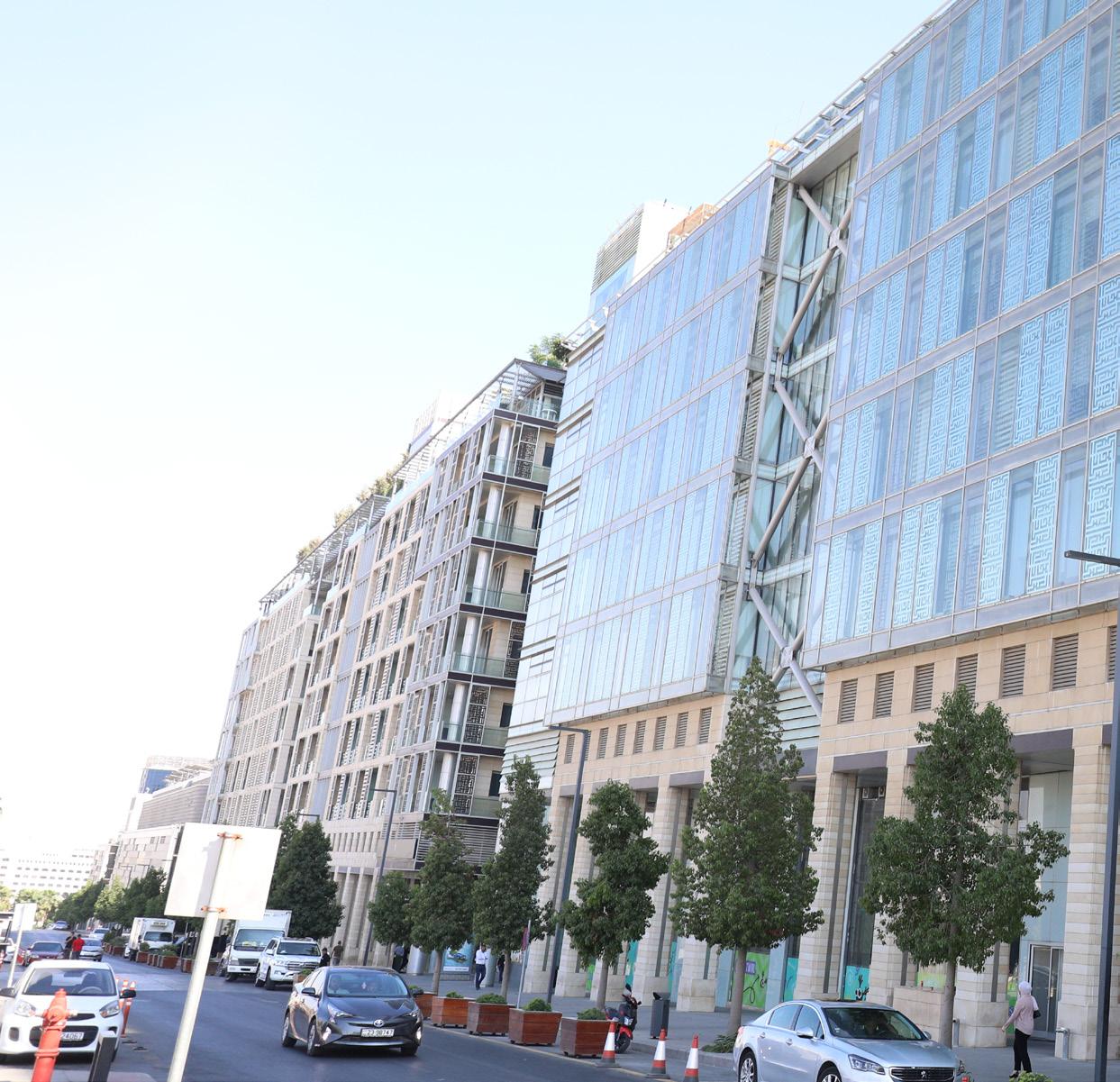
“We will continue to focus a lot on health, safety and wellness, and encourage staff to talk, undertake exercise and engage in team-building activities”
RAZAN ABDEEN CULTURE & PEOPLE DEVELOPMENT DIRECTOR, ORANGE JORDAN
Creating and maintaining cultural engagement now remains a key priority moving forward, along with Gender Equality and Social Inclusion (GESI).
Building links with the next-generation of university graduates remains an ongoing commitment, too: the company offers annual scholarships and is fortunate to draw on the country’s large pool of welleducated and tech-savvy youngsters.
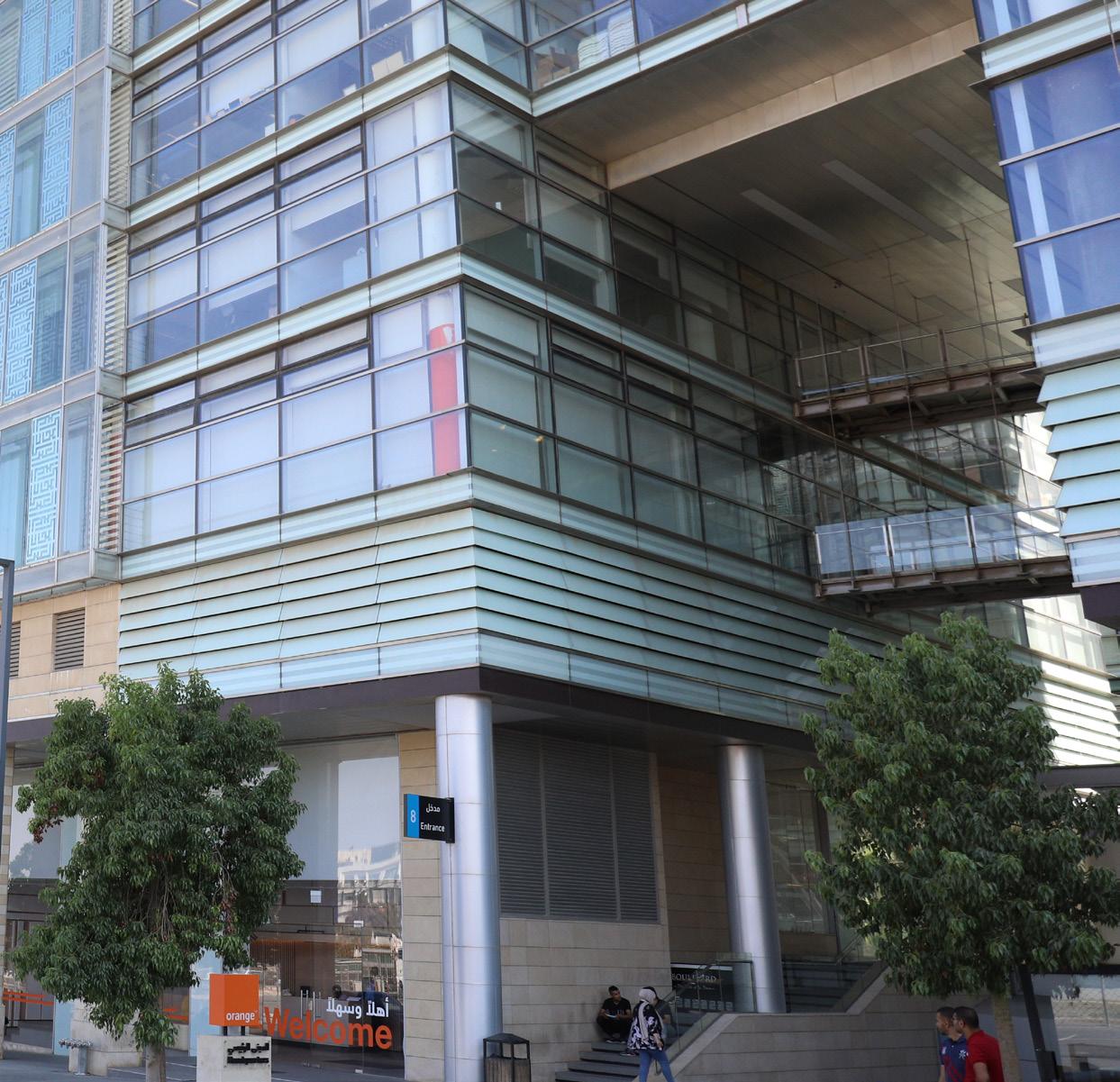
Jordan’s universities, colleges, medical schools, engineering schools, and law
schools are highly respected, offering a range of Bachelor’s, Master’s, and PhD programmes. Razan herself has an MBA in Business Administration from the University of Jordan.
Orange Jordan works with a range of suppliers, including Huawei, which is actively involved in the Middle Eastern country’s upcoming 5G rollout.


With 85% of managers believing hybrid teams will become the ‘new normal’, we explore industry predictions for the next phase of the remote workforce
 WRITTEN BY: JOSEPHINE WALBANK
WRITTEN BY: JOSEPHINE WALBANK
Across the world’s economies and businesses, remote working has been established as a permanent post-pandemic shift – both in habit and mindset.
While digital workforces affirm themselves as a change that’s here to stay, establishing a remote working culture, improving crossteam connectivity, and deploying new technologies will be relied upon to build bonds between a global team, many of whom will rarely meet in person, if ever.


So, as we look to the future of remote work, we explore the current state of the digital workforce, the risks that need to be managed, and the possible place of the metaverse in this ongoing transition.
According to a recent TECLA publication, 85% of managers believe that having remote workers within the team will become the ‘new normal’.
While it’s a situation that was primarily born out of necessity, the rise of remote working has unlocked major global benefits and altered the way that people view their workplace and job role.
For the technology sector, in particular – which faces escalating challenges from the growing talent shortage – the flexibility and freedom of remote working has helped to open up the talent pool.

“ THERE ARE A NUMBER OF THINGS THAT YOU CAN DO, AND ONE IS JUST TO UNDERSTAND THAT ADAPTABILITY IS KEY AND THAT CURRENCY IS SO IMPORTANT TO AGREE ON AS A TEAM ”
SUSAN STANDIFORD CHIEF PRODUCT & TECHNOLOGY OFFICER, STEPSTONE
“We have an opportunity here to bring onto the scene talent that potentially wasn't available before,” says Kreshnik Mati, the VP of Technology at Klick Health.
Connecting the remote workforce – industry predictions for next-gen collaboration technologies

For a remote employer to suitably support their remote teams – and make this shift a successful, permanent one – they need to implement a strong remote working culture.
“We're defining a new remote culture and almost redefining our values, so that remote employees can join something that they can see, read, experience,” asserts Mati.
Thanks to innovations in mobile technologies, it has never been easier for teams to work together online. But, is there a potential for this technology to be taken further and for teams’ usual bonds and interactions to be successfully recreated in the virtual sphere?
Could we realistically expect to see businesses with remote workforces make investments in the metaverse? The future of metaverse boardroom meets and virtual offices is being widely discussed. But, at present, it’s a future that is still very much up for debate.
“We've deepened silos – the teams that are remotely working together in a distributed way get stronger, but, unfortunately, that also strengthens the walls between the organisation,” outlines Susan Standiford, the Chief Product and Technology Officer at StepStone.
“We need to find ways to get workers, employees, and team members to think outside of the world that they're in.”
“I think it inspires innovation when you can break down those walls. You optimise within your team, if you stay within your team. So, I think we need to find the elements, the ceremonies, the opportunities to cross those
borders, and then also to make sure that it's safe and healthy for people to find the mental health balance that they need,” Standiford comments.
Bridging the remote working gap –is the metaverse a viable solution? With its ability to closely recreate in-person environments and bring people together into one shared space, the metaverse seems ideally suited to break down hybrid workforce walls.

So, will the metaverse make remote collaboration more effective, more conscious of workers’ mental health, and provide a permanent talent recruitment solution?
For Mati, the main situations that the metaverse would aim to enhance would be brainstorming and workshops, as well as other in-person collaboration scenarios. But, he asserts, there are still critical elements that it cannot fully resolve.
“What I find – and this is more personal –is that the ‘energy’ is never going to be there when you’re completely virtual. There's a certain energy when we're brainstorming together that’s not just about the effectiveness of information flow. It's literally the way we interact, the way we understand each other, the way the energy flows in the room. I don't know if we can solve that through tech,” Mati comments.
“We've tried virtual environments for many other things in the past; it's not the first time we're coming across it,” adds Shubi Ranjish, the Group Head of Information and Digital Technology at BAT, echoing Mati’s sceptical assessment.
“Could it work for a particular use case? Yes, absolutely. But, from an organisational perspective, you have to determine, commercially, what you're trying to put in.”
“WE'RE ALMOST REDEFINING OUR VALUES NOW TO CREATE THAT NEW CULTURE, SO THAT REMOTE EMPLOYEES CAN JOIN SOMETHING THAT THEY CAN SEE, READ, EXPERIENCE AND HAVE”
KRESHNIK MATI VP OF TECHNOLOGY, KLICK HEALTH
“So it’s the balance of experience versus the commercial commitment required to bring things in, as well as the upskilling commitment, and the change in behaviour that has to happen. If you want to go there, you have to put all of them together to actually make a decision regarding whether that works for your organisation,” Ranjish explains.
Equally, according to Brittan Heller, a metaverse expert specialising in the fields of law, technology, and human rights, introducing the metaverse into a business context comes with significant risks to manage.
“Businesses wanting to enter virtual arenas should think about the technical, practical, and ethical hurdles of XR to be prepared for the wide spectrum of risks.”
Firstly, businesses will need to ensure that their choice of form factors are accessible for all users, so that poor DE&I standards are not imported into these new venues.
“Currently, accessibility-based challenges are the largest area of legal risk for XR, as a court found that the Americans With Disabilities Act may apply to virtual worlds,” advises Heller.
Then, there’s the matter of data security.
“Data in the metaverse needs protection to ensure privacy protections and user safety. Companies seeking B2B partnerships – or to integrate third-party applications into their digital worlds – will need to set high standards, lest there be a Cambridge Analytica-style violation of public trust.”
Data security requirements are taken to a new level within the metaverse, due to the deeply personal nature of the data that it gathers.
“XR hardware necessarily involves multiple sensors, measuring biometric data,
and location-based scanning to position users in space,” explains Heller.
“Companies need to understand that biometric privacy regimes were written to protect user identity, but not necessarily to protect the type of intimate data and behavioural inferences we can take from bodily sensors, eyetracking, and pupillometry.”
“The smartest companies will go beyond legal requirements, so they aren’t caught unaware when the law catches up to innovation and moves to protect what I’ve promoted as concepts of ‘mental privacy’.”
So, as it stands, the metaverse’s logistical risks need to be ironed out before it can be introduced at a mainstream scale. However, that being said, metaverse offices certainly aren’t being completely ruled out.
After all, as Ranjish says, “never say never, and we'll see how the technology progresses”.
“BUSINESSES WANTING TO ENTER VIRTUAL ARENAS SHOULD THINK ABOUT THE TECHNICAL, PRACTICAL, AND ETHICAL HURDLES OF XR TO BE PREPARED FOR THE WIDE SPECTRUM OF RISKS ”
BRITTAN HELLER METAVERSE EXPERT

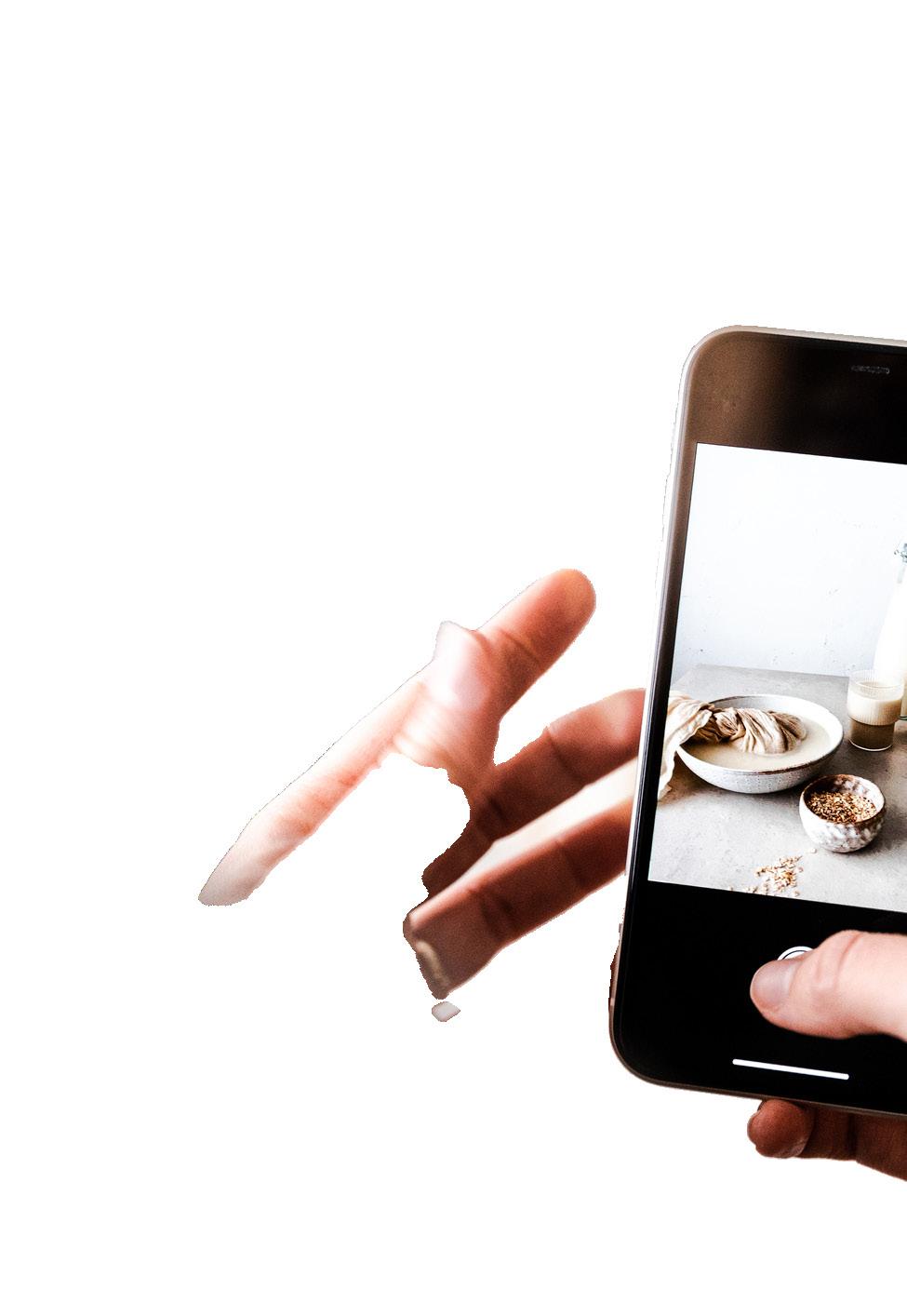



It’s the first of many entries for Apple. This time, we’re looking at the OG iPhone 13. It may come at a slightly higher price point than the SE, but it offers considerable advances for your money.
It offers a dual rear camera system – with a 12MP (f/1.6) camera alongside a 12MP ultrawide, 120 degree camera –and a 12MP(f/2.2) front camera.

What’s more, unlike the latest SE, the 13 comes with Nightmode support, meaning it also achieves high quality low-light and nighttime photography.
With a starting price of £769, the Samsung Galaxy S22 sits slightly lower than the iPhone 13 (£779 starting price), while offering an extra rear camera, too.
Released in February 2022, the model offers a superbly powerful 50MP (f/1.8) main camera, alongside a 10MP (f/2.4) telephoto lens, and a 12MP (f/2.2) ultrawide 120 degree camera.
However, at 10MP, its front camera slightly negates the quality of the photography that its rear cameras can achieve.


At a starting price of £799, OnePlus’s top 10 entry offers exceptional value for a pro smartphone model. And, its camera quality will certainly get the attention of the usual market dominators.
The device features three rear cameras: a 48MP (f/1.8) main camera; an 8MP (f/2.4) telephoto camera; and a 50MP ultra wide, 150 degree camera. Plus, at 32MP (f/2.2), its front camera represents a significant step up.
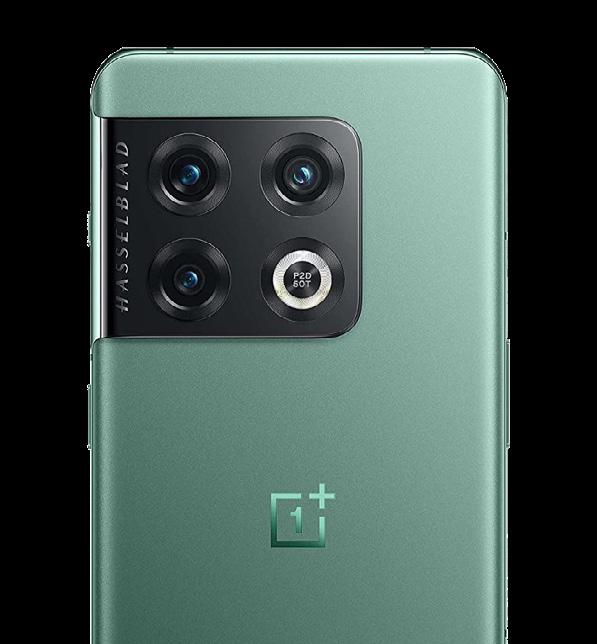
Xiaomi’s top 10 representative is its new 12 Pro model, which was first launched globally in March this year.
The rear camera set-up consists of three 50MP cameras, one an f/1.9 wide, one an f/1.9 telephoto with a 2x optical zoom, and the third an f/2.2 115 degree ultrawide camera. Then, for the front, the smartphone features a 32MP wide camera.
The device’s main camera is particularly stand-out, as its 1/1.28-inch Sony IMX707 sensor is more advanced than many of the other market leaders.


Stepping things up to a quad-lens rear camera system, Huawei’s top 10 competitor is its P50 Pro. Huawei has set the dualmatrix camera design as one of the device’s key selling points, and for good reason. The device boasts a rear camera system with remarkable capabilities – a 50MP ( f/1.8) main camera, a 13MP (f/2.2) ultrawide camera, a 40MP monochrome clarity-enhancing camera, and a 64MP (f/3.5) zoom periscope camera, with a 3.5 times optical zoom.

Comparatively speaking, though, its 13MP (f/2.4) front camera seems to let the device down somewhat.
The Galaxy Z Flip 4 and Galaxy Z Fold 4 have received considerable publicity for the photo-taking opportunities that they open up (literally).
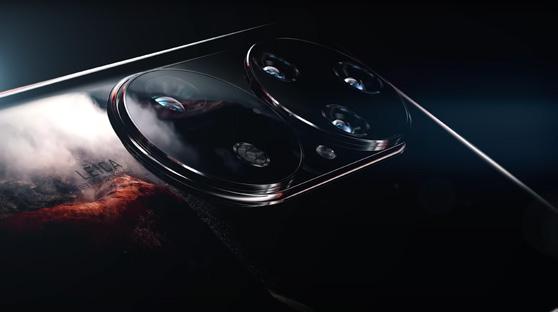
The Fold 4 features a triple rear camera set-up, consisting of a 12MP (f/2.4) ultra wide camera, a 50MP (f/1.8) central wide-angle camera, and a 10MP (f/2.4) telephoto camera.
These work together with a 10MP (f/2.4) cover camera and a 4MP (f/1.8) under display camera. Through Quick Shot, you can take a selfie from the cover screen camera, or you can use the FlexCam to take a photo hands-free.
Offering a wide range of specialist features and advanced capabilities, with the cameras of its 13 group, Apple came out allguns-blazing.
The three rear cameras consist of a 12MP (f/1.5) main camera, an ultrawide 12MP (f/1.8) camera, and a 12MP (f/2.8) telephoto camera. Then, for the front camera, the model features a 12MP (f/2.2) camera.
The new model has re-positioned Apple’s usual camera layout into a diagonal architecture. As a result, the iPhone 13 group achieves Apple’s “most advanced dual-camera system”.

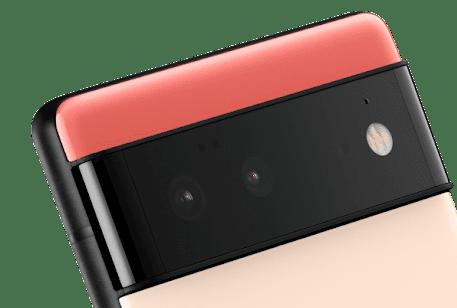
It offers the biggest wide camera sensor, a sensor-shift optical image stabilisation tool, and a faster sensor for the Ultra Wide camera. As a result, the device’s new Wide camera captures 47% more light, dramatically enhancing photo and video quality, plus features both Photographic Styles and Cinematic mode.
Maintaining the relevancy of Android brands in the face of iPhone dominance has been an ongoing battle
Luckily, Google has been known for featuring extremely high quality cameras in its smartphones, and the Pixel 6 Pro firmly adheres to this trend – with the device’s camera remaining one of the most sophisticated on the market, despite being released in 2021.
The Pixel 6 Pro is another three-rearcamera device, comprising a 50MP (f/1.9) main camera, a 48MP (f/3.5) telephoto camera with an impressive 4 times optical zoom, and an ultrawide, 114 degree 12MP (f/2.2) camera.
For selfies, it offers an ultrawide, 94 degree 11.1MP camera.
Alongside these specs, the Pixel 6 Pro also comes with a range of pioneering camera phone features, with added software including the Magic Eraser, the long exposure Motion mode, and Real Tone colour capture.
Although it was the Apple iPhone 13 that held the highest majority of the global smartphone market (at 5.5%), the Max version still secured second spot, with a 3.4% global market share.
The camera system for the 13 Pro Max consists of three 12MP rear cameras – a (f/1.5) main camera, a (f/1.8) ultrawide camera, and a (f/2.5) telephoto camera with 3 times optical zoom – alongside another 12MP (f/2.2) front camera.
What makes the Max’s camera unique is the larger sensor size for both its main and ultrawide rear cameras, added autofocus to the ultrawide camera (which allows it to act as a highly advanced macro camera), and a higher quality of low-light computational photography.

Apple’s new Cinematic mode provides users with an extremely sophisticated portrait video feature, which is professional-level in its quality.


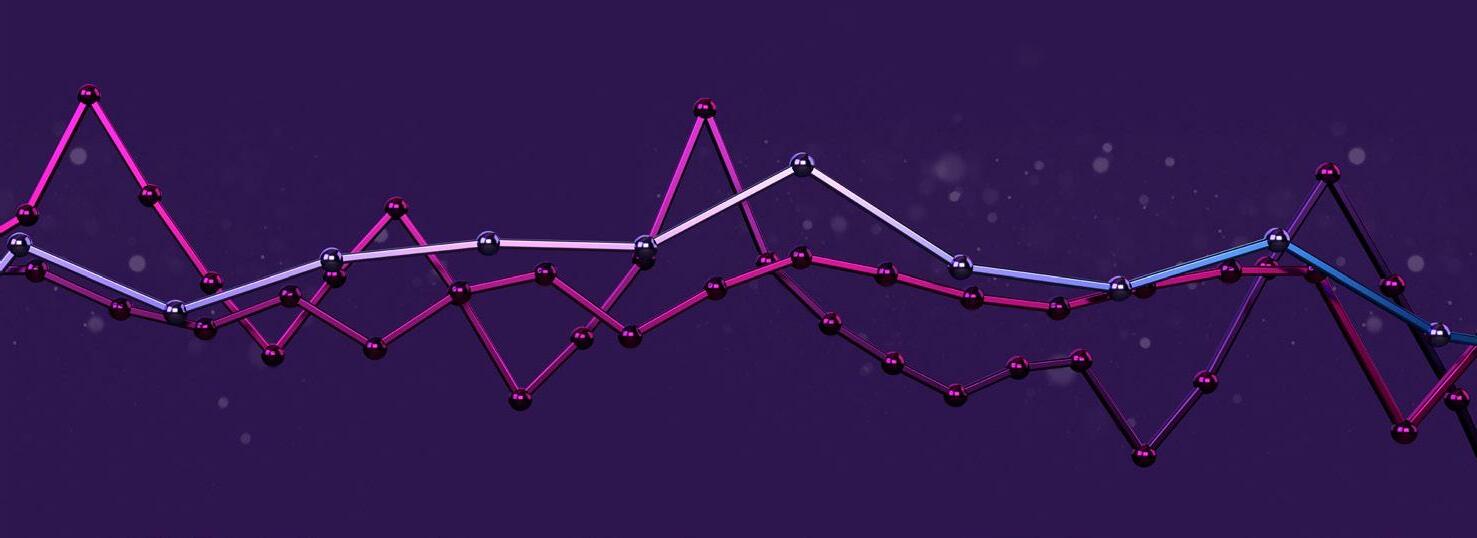
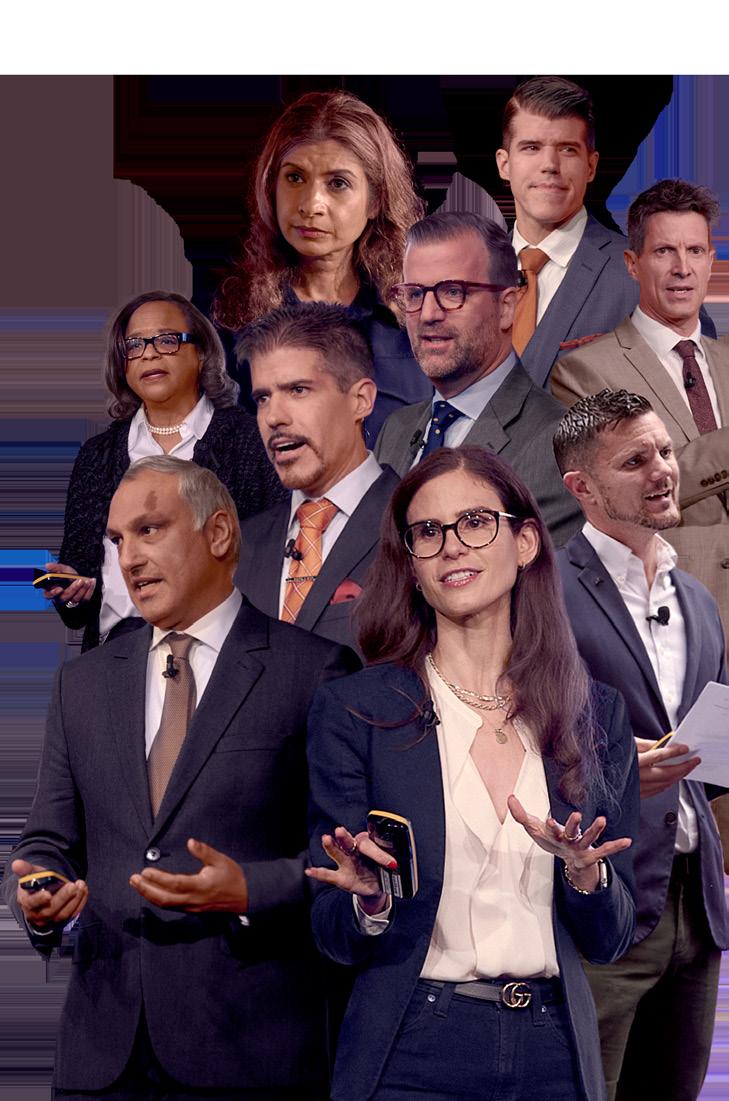

presentations, Q&A sessions to 1-2-1 networking, the 2-day hybrid show is an essential deep dive into issues impacting the future of each industry today.


Global giants and innovative startups will all find the perfect platform with direct access to an engaged and active audience. You can’t afford to miss this opportunity. See you on:



As the smartphone with the most advanced camera in Apple’s 14th generation portfolio, the iPhone 14 Pro is the cherry at the top of a very impressive cake.
With the launch of its new 14th generation smartphones, Apple has invested heavily in camera upgrades.
With the iPhone 14 Pro, Apple has deployed an industry-leading 48MP (f/1.78) main camera, a 12MP (f/1.78) telephoto camera, plus another 12MP (f/2.8) telephoto camera, and a 12MP (f/2.2) ultrawide camera.

These already-impressive cameras are enhanced further with an advanced quad-pixel sensor. As a result, the phone’s cinematic mode films in 4K HDR at 24 fps (which is no less than the film industry standard), and this model has become the world’s only smartphone that can film, view, edit, and share in ProRes or Dolby

What’s more, the 14’s pro camera system achieves 4x the resolution in ProRAW, and adds a 2x optical-quality Telephoto zoom.
It’s an exceptional collection of capabilities, powered by the new A16 Bionic smartphone chip.
The combination of these impressive features has meant the iPhone 14 Pro is widely regarded as the market leader in smartphone photography technology.


